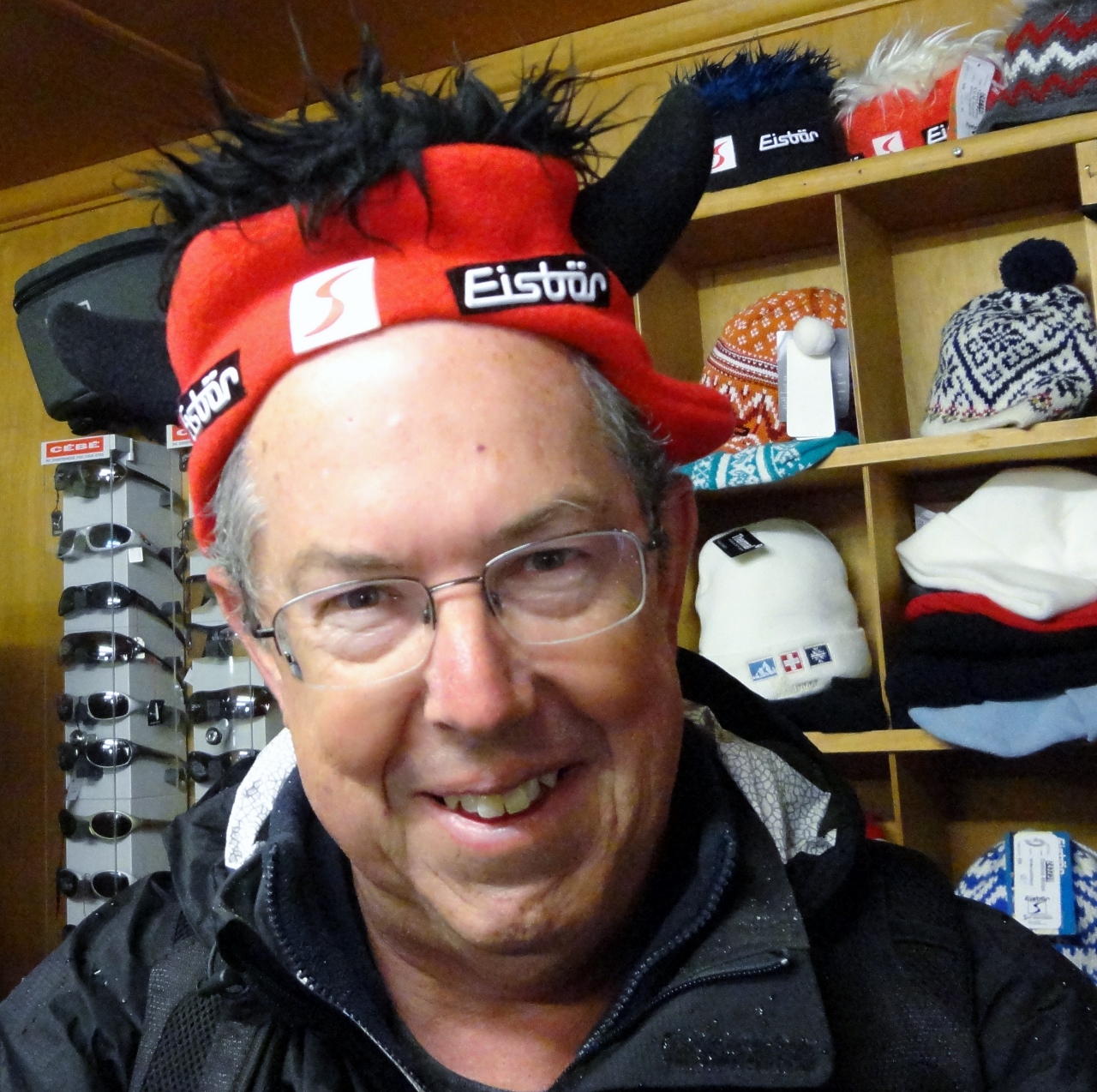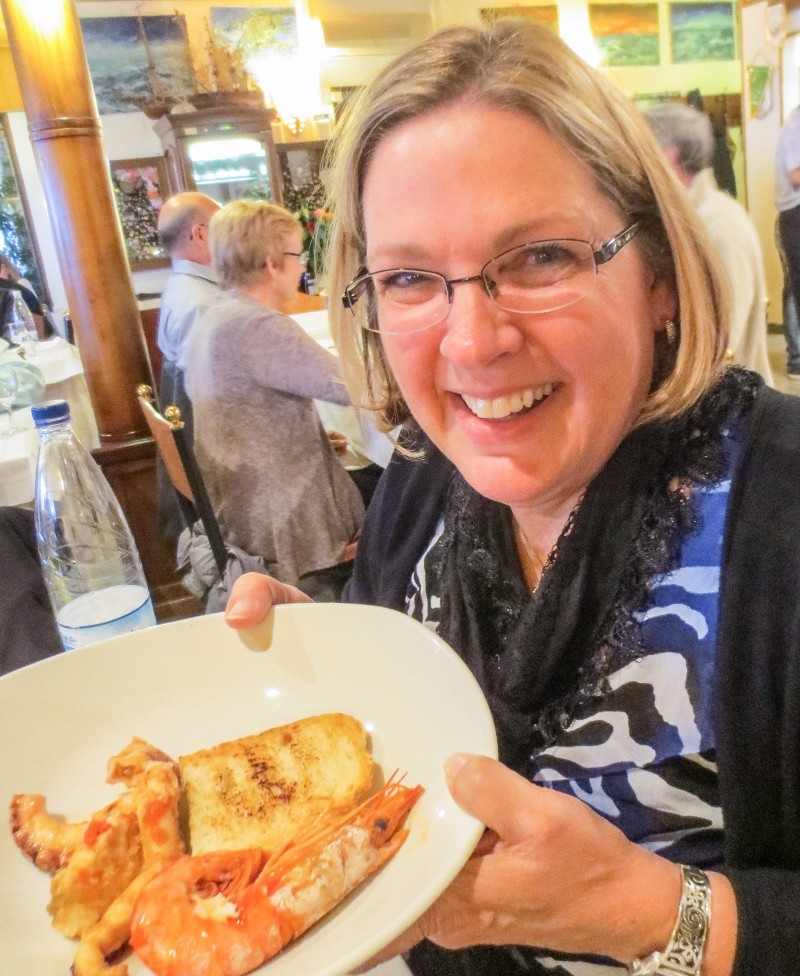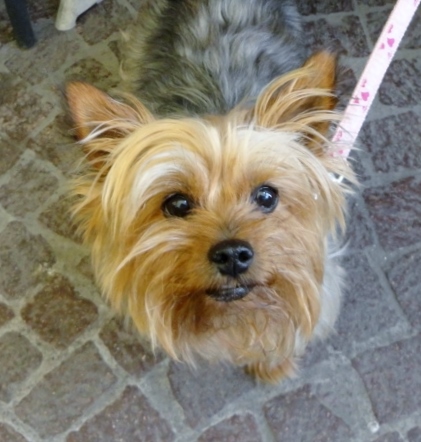Taking a Rest Stop For a Spin
Rest stops in Germany are very nice and have mini-marts, stores, restaurants and the amazing Sanifair system. In this system you “pay to pee,” but the benefit is an attendant who keeps the bathroom sparkling clean. The ticket stub you get doubles as a voucher you can use in the stores. I couldn’t figure out how to flush the toilet. One button I pushed caused the toilet seat to spin around while a spray of water washed it. I had never seen a spinning toilet seat and was thankful I was not sitting on it when it began to spin.
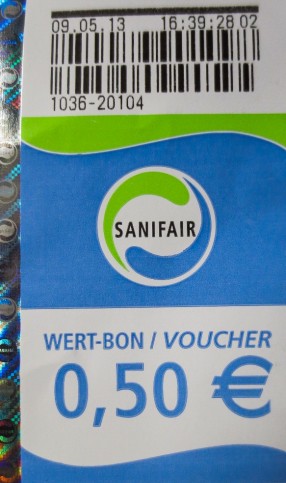
Bacharach at Dusk
We got to Bacharach late in the afternoon and set off to explore the quaint German village. We found several very small doors that made us think we should start looking for hobbits.
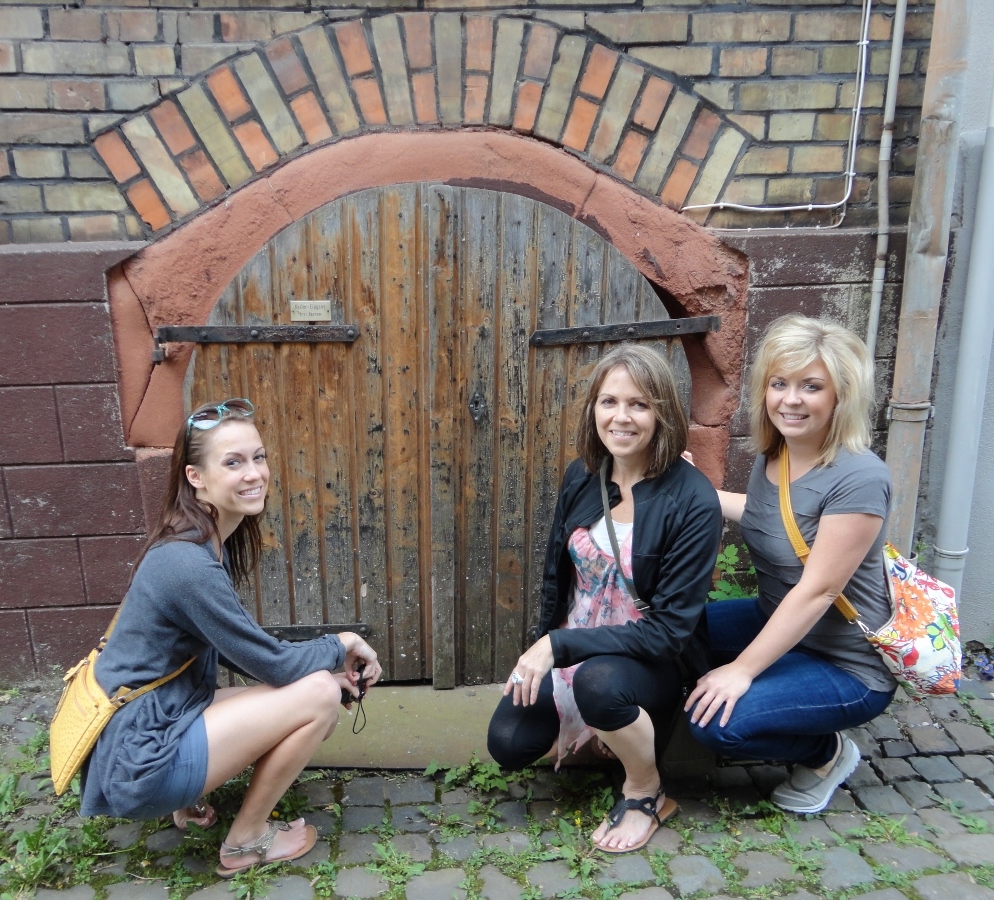
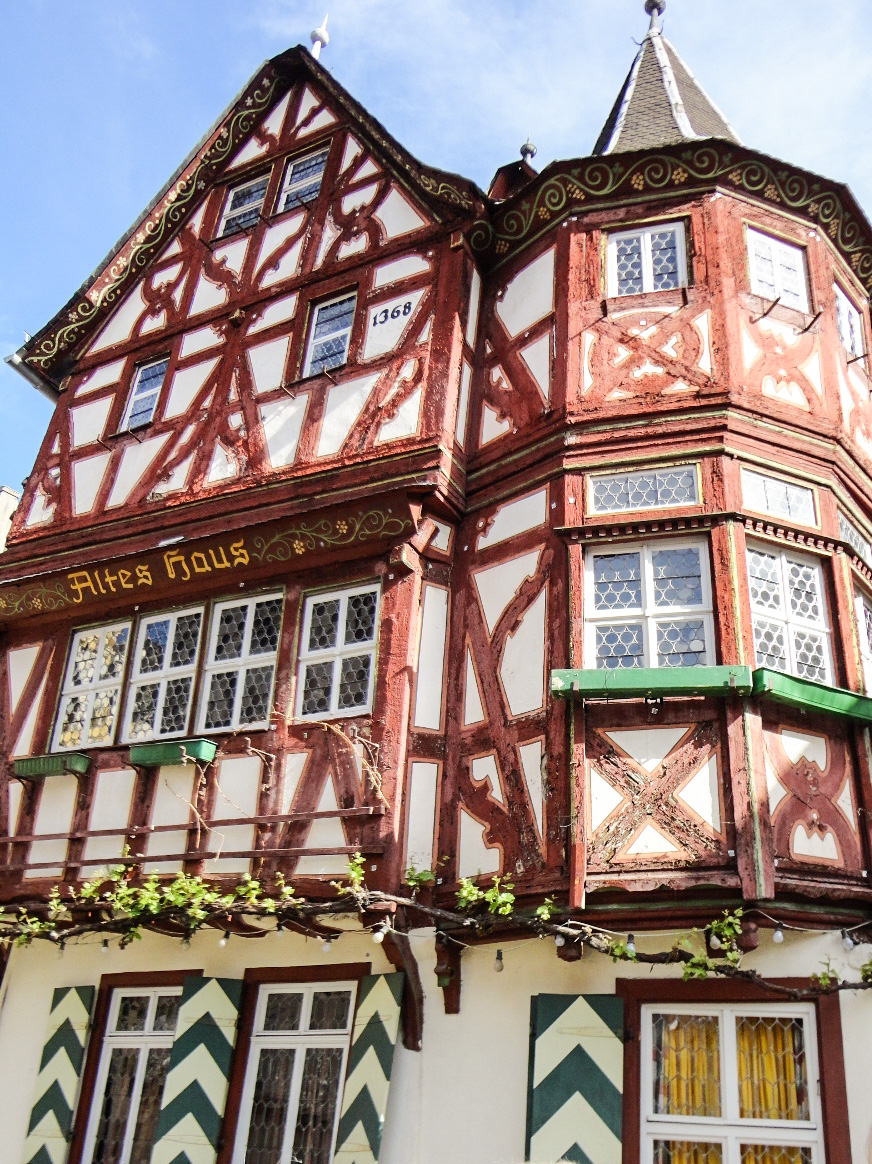
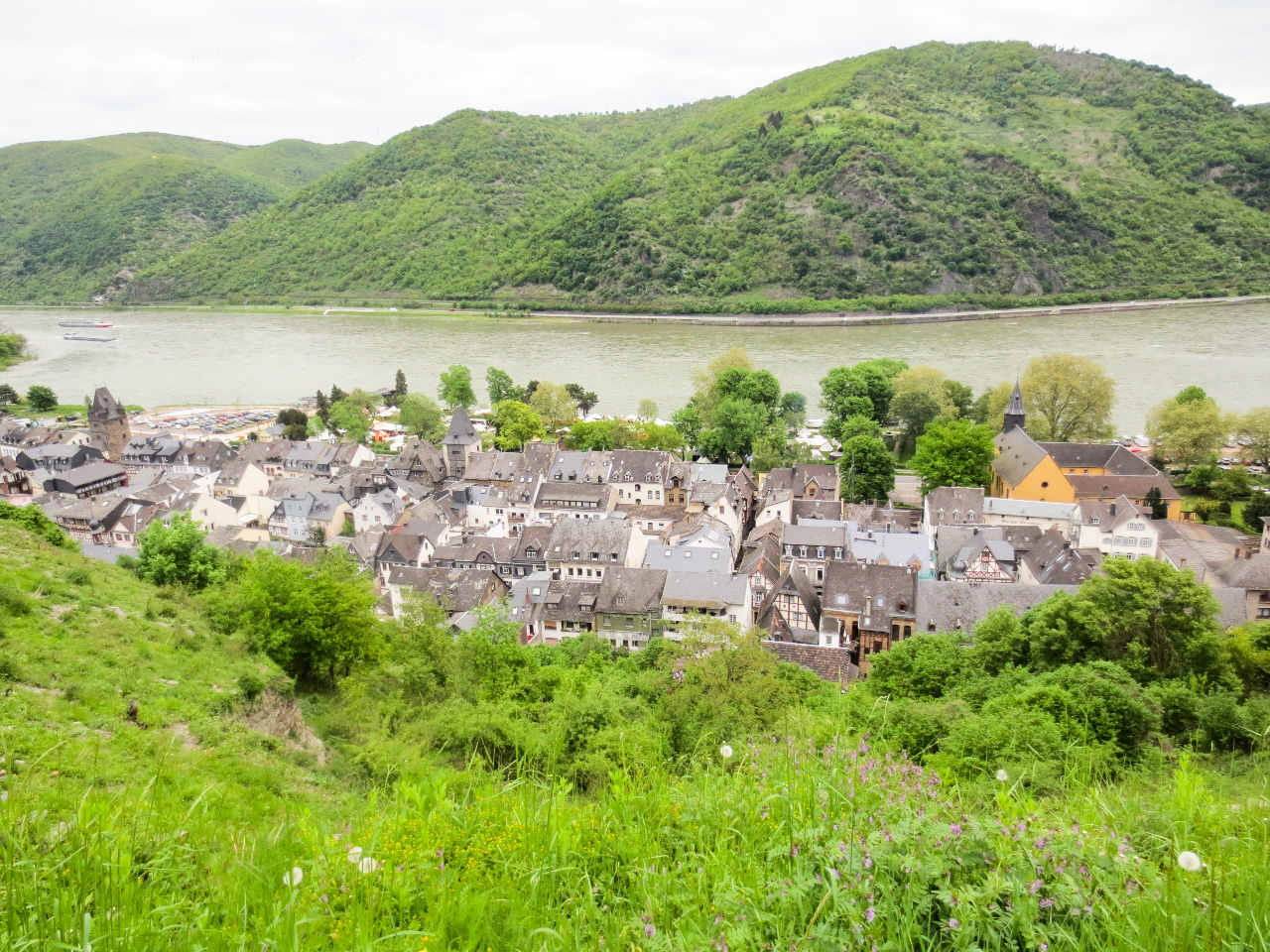
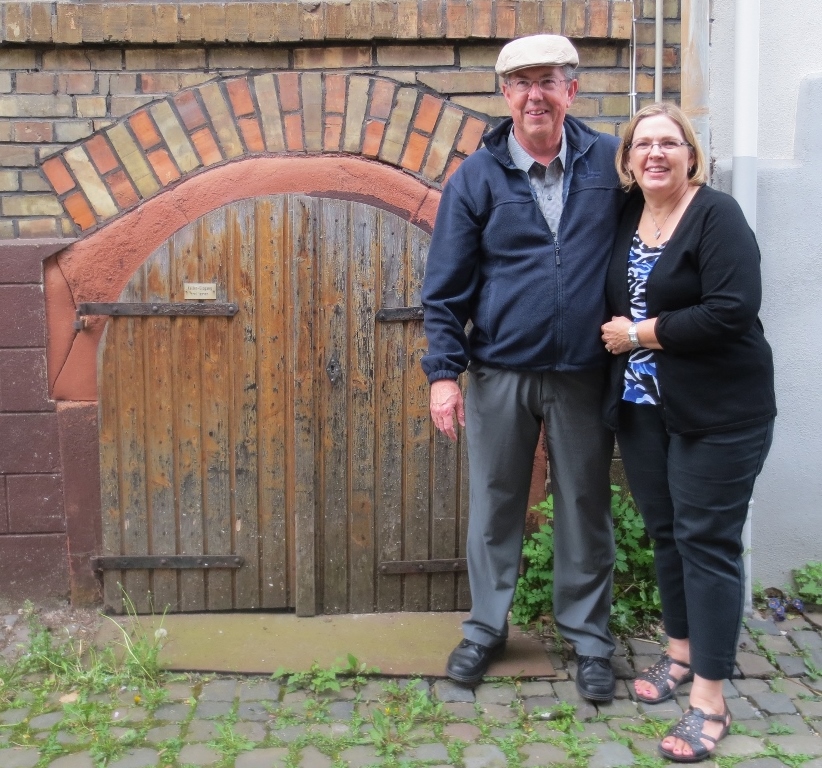
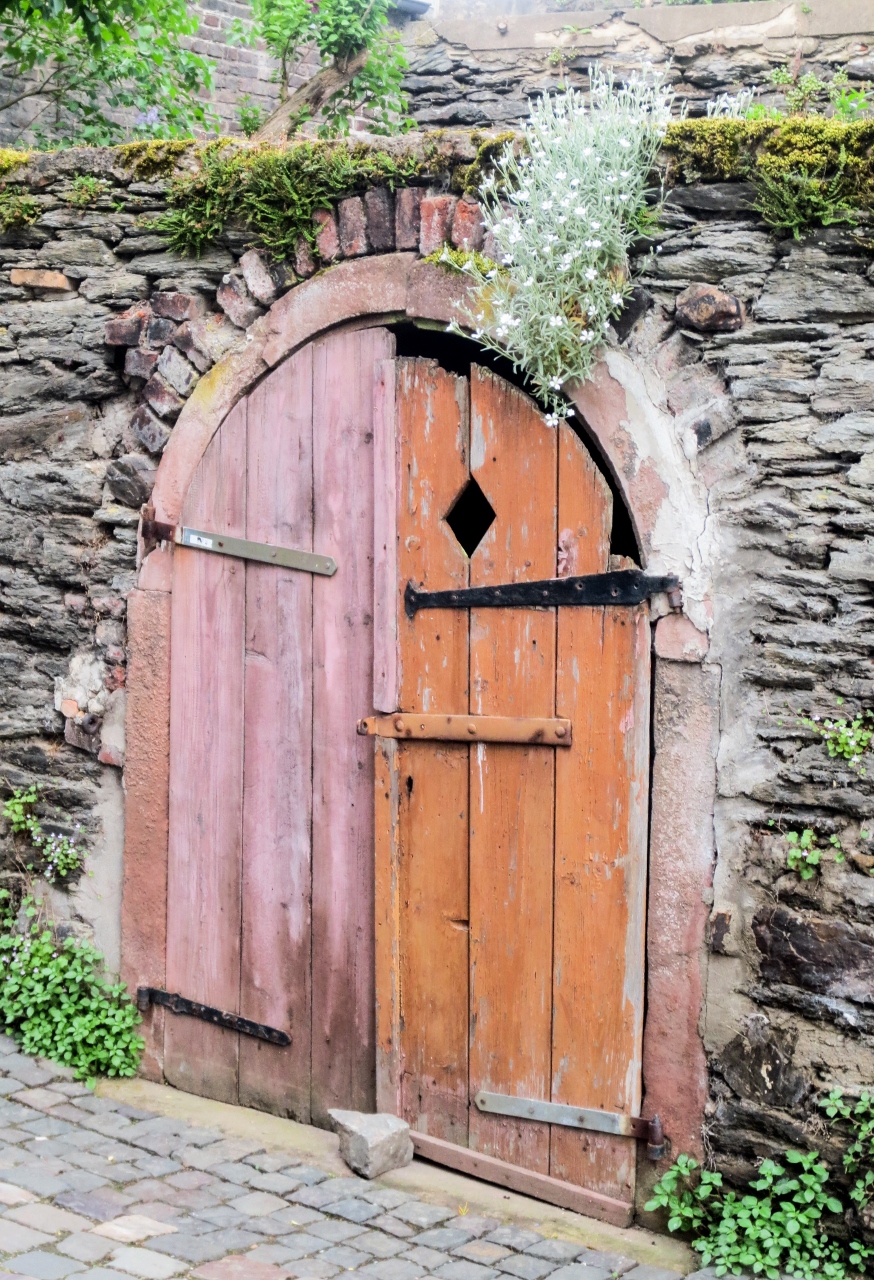
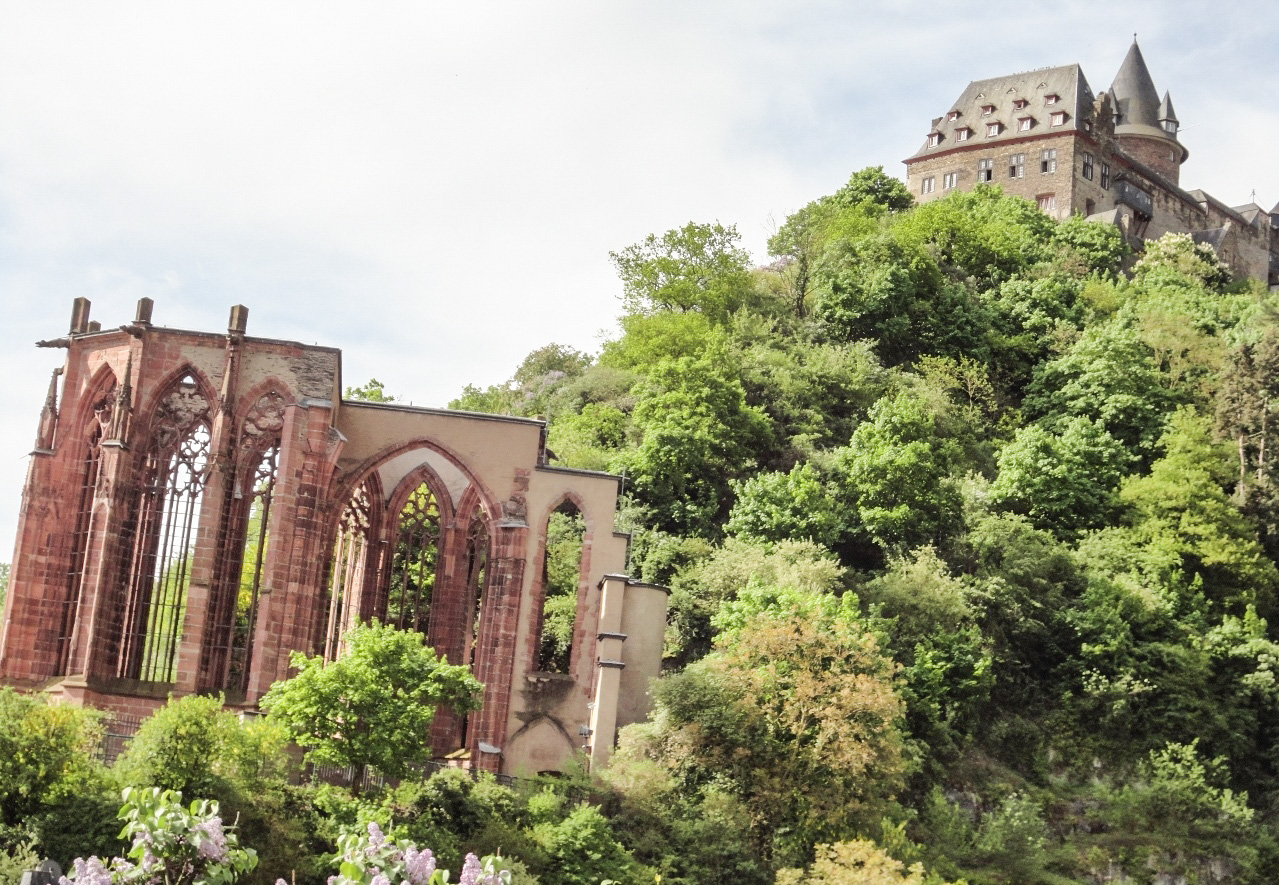
Chapel Ruins
15th-century medieval chapel ruins with the castle on the hill
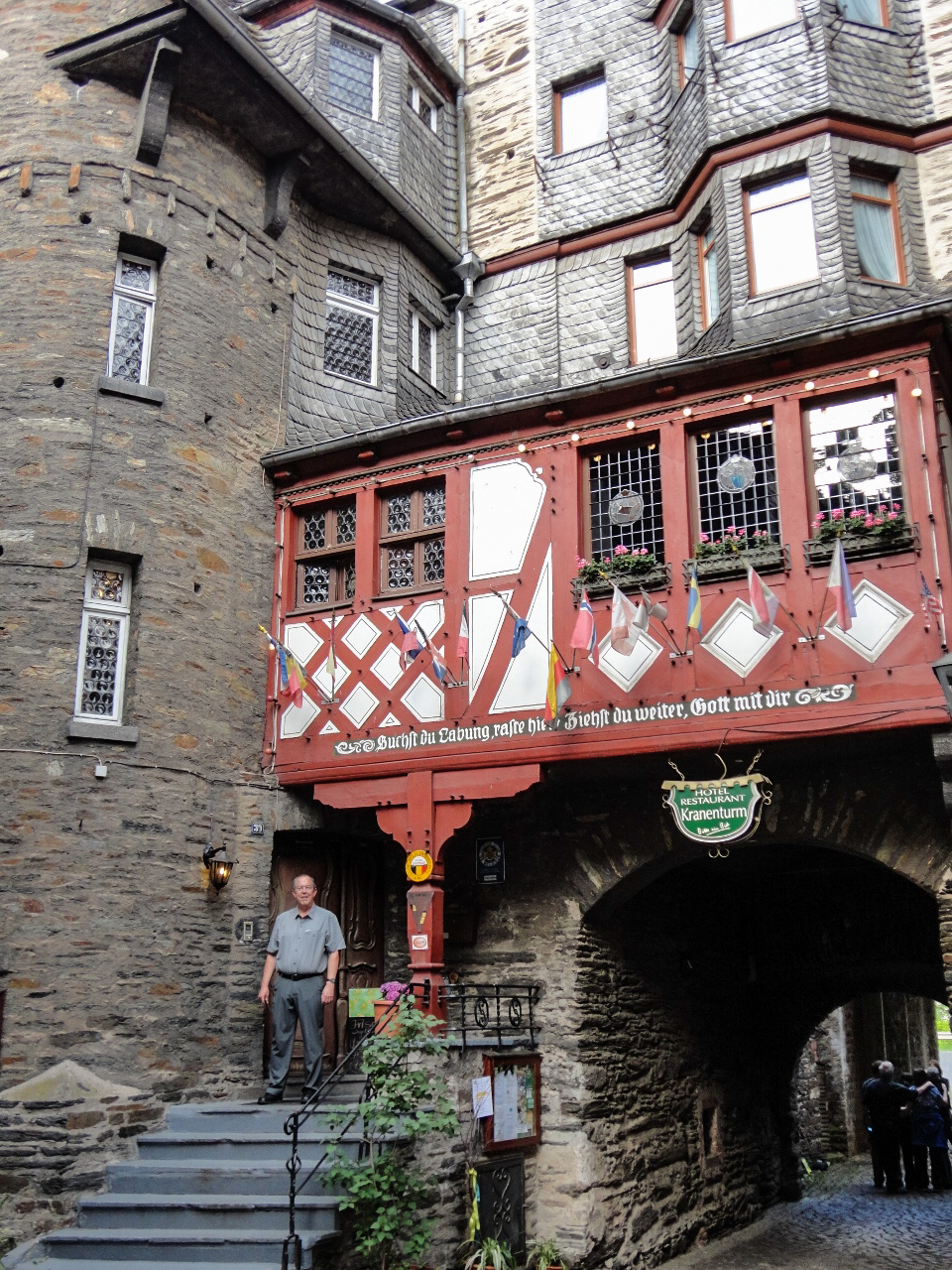
Quaint German Village
It was fun staying in the 800-year-old Hotel Kranenturm, part of the medieval town wall.
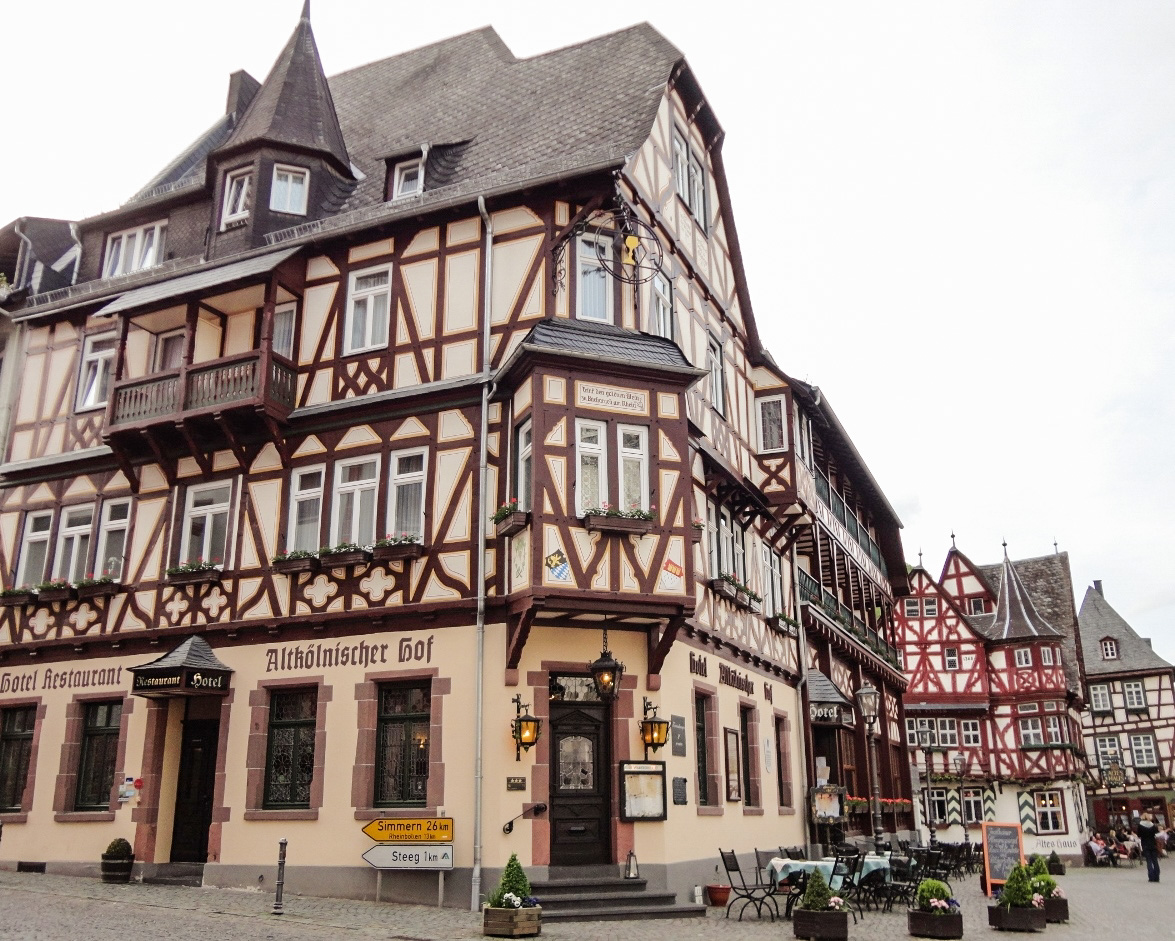
Half-timbered
The Altes Haus is a 14th-century building with the first floor made of stone and the upper floors were half-timbered, an ornate style common in the Rhine Valley.
Local Guide Herr Jung joyfully teaches us about Bacharach
Herr Jung, an 82-year-old local guide, took us on a delightful tour of Bacharach. He told us about his difficult experiences as a young boy during World War II. His older brother was drafted into the German army, sent to the Russian front and never heard from again. It brought tears to his eyes all these years later when he thought of his brother and all the people who suffered in the war. He was so kind and gracious and had us singing songs, laughing, and trying to keep up with him as he climbed the hills of Bacharach.
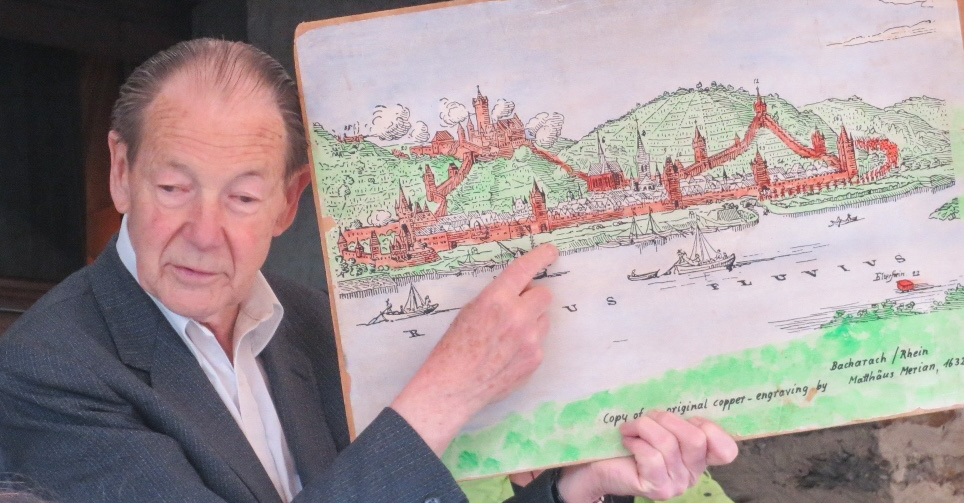
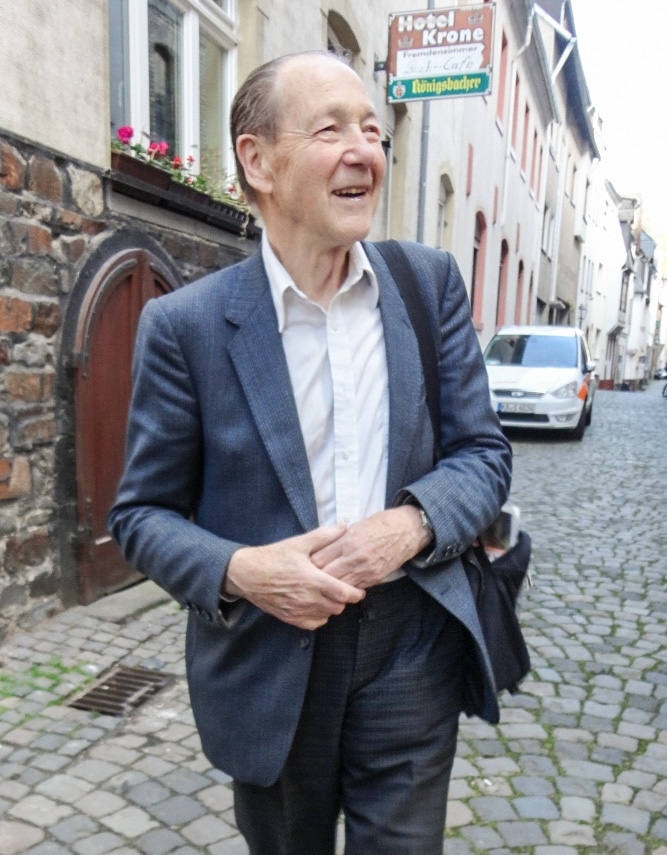
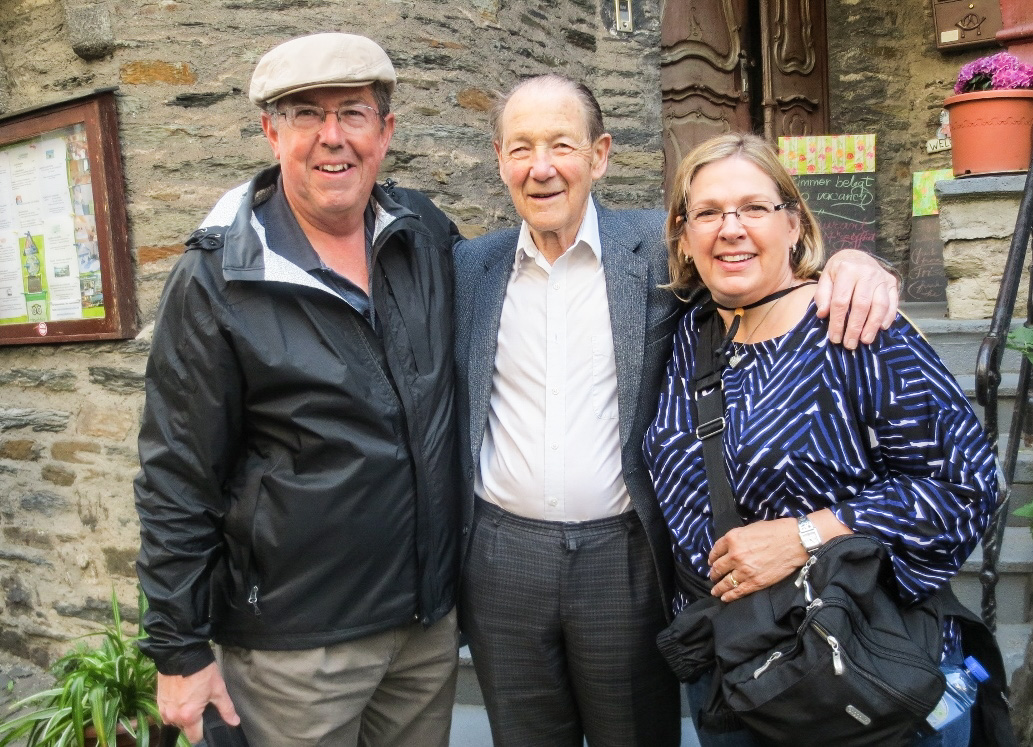
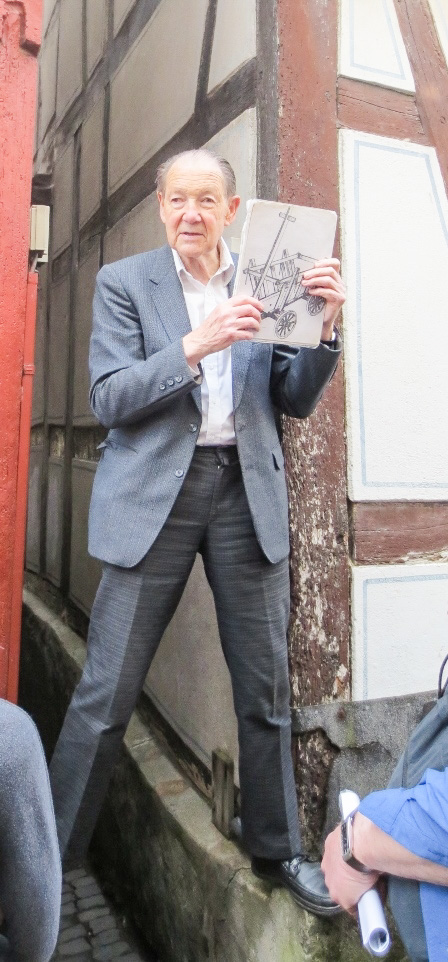
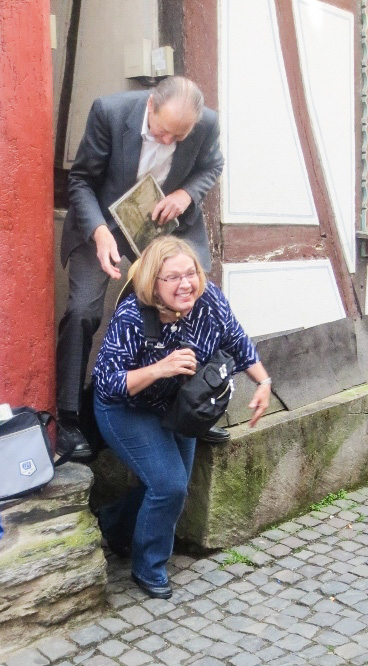
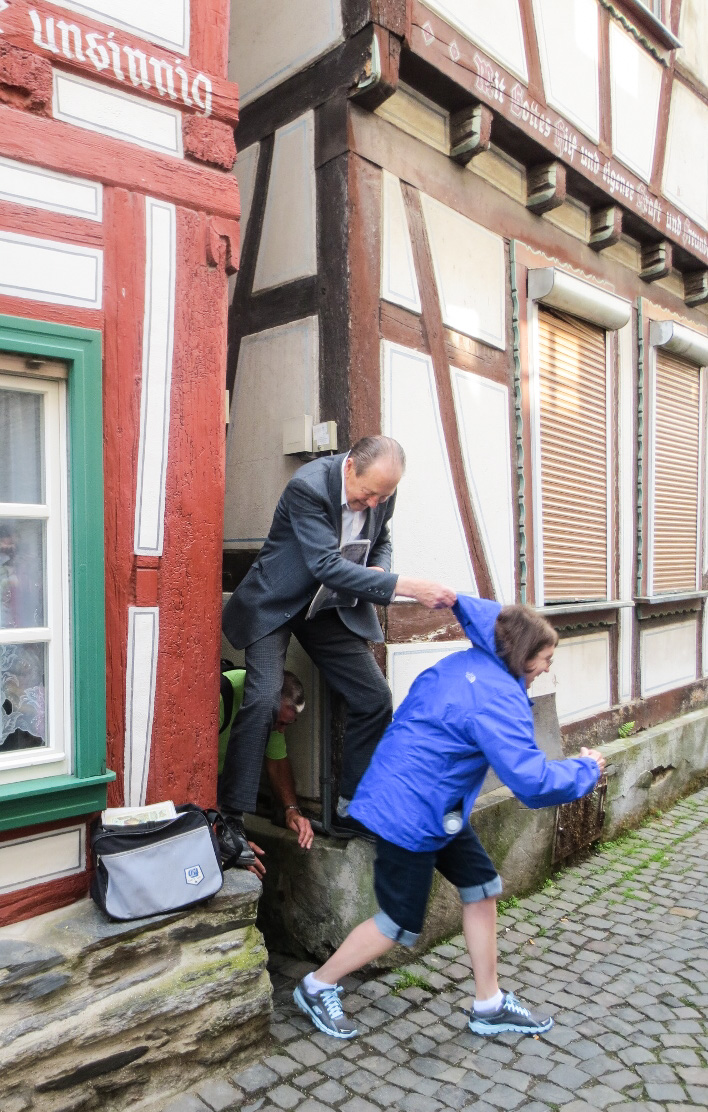
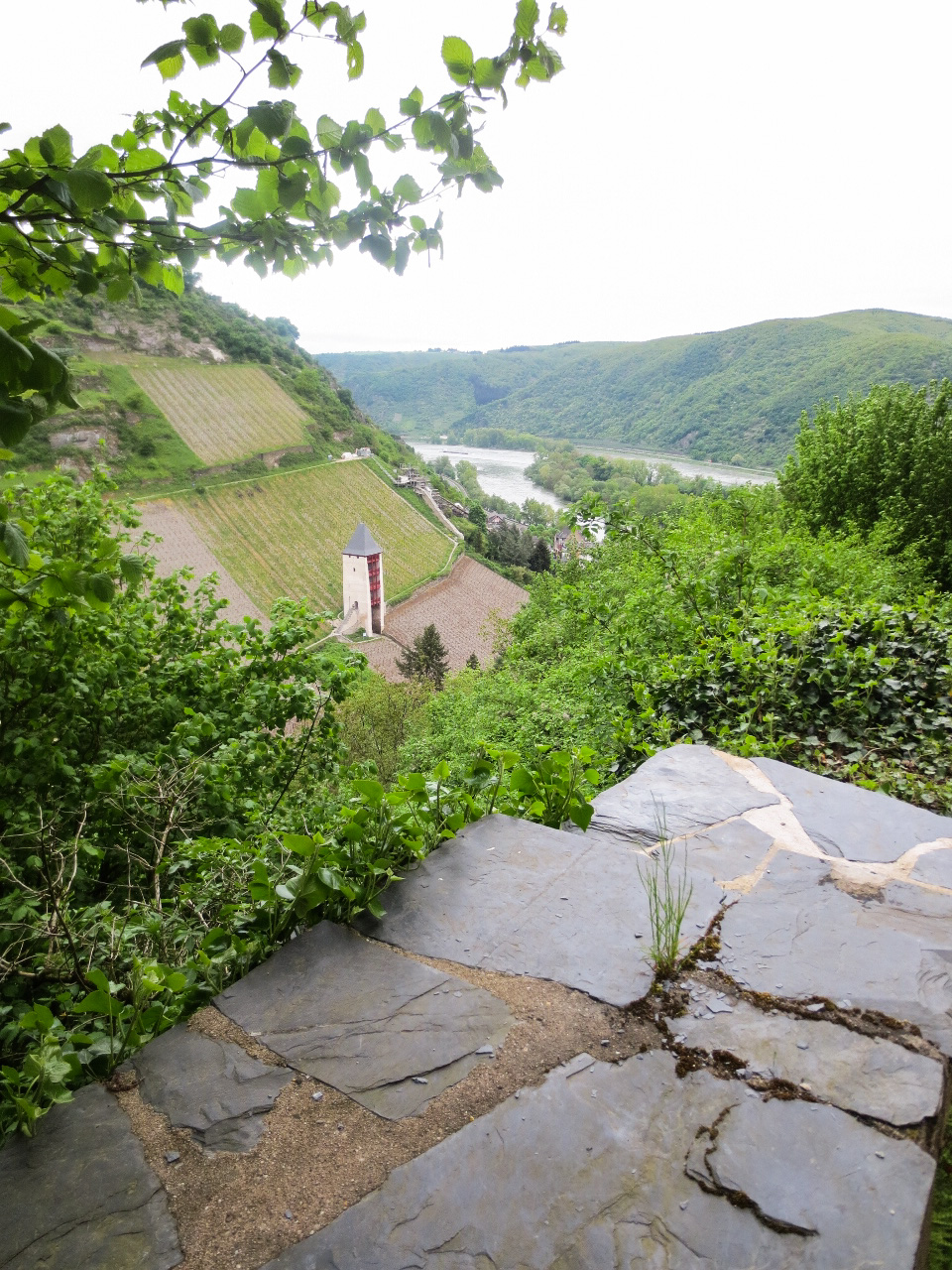
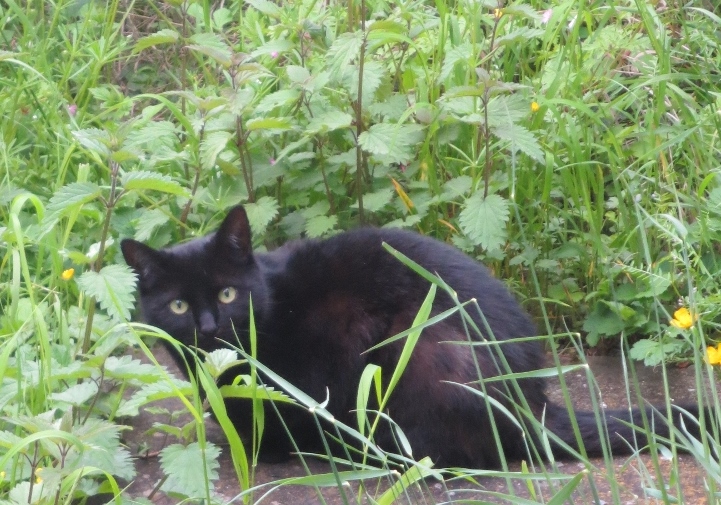
Mark’s Hike
Mark hiked to the castle on top of the hill behind Bacharach accompanied by a curious little cat. The people at the castle were very surprised to see an American at the top and told him that American tourists usually never climb that high.
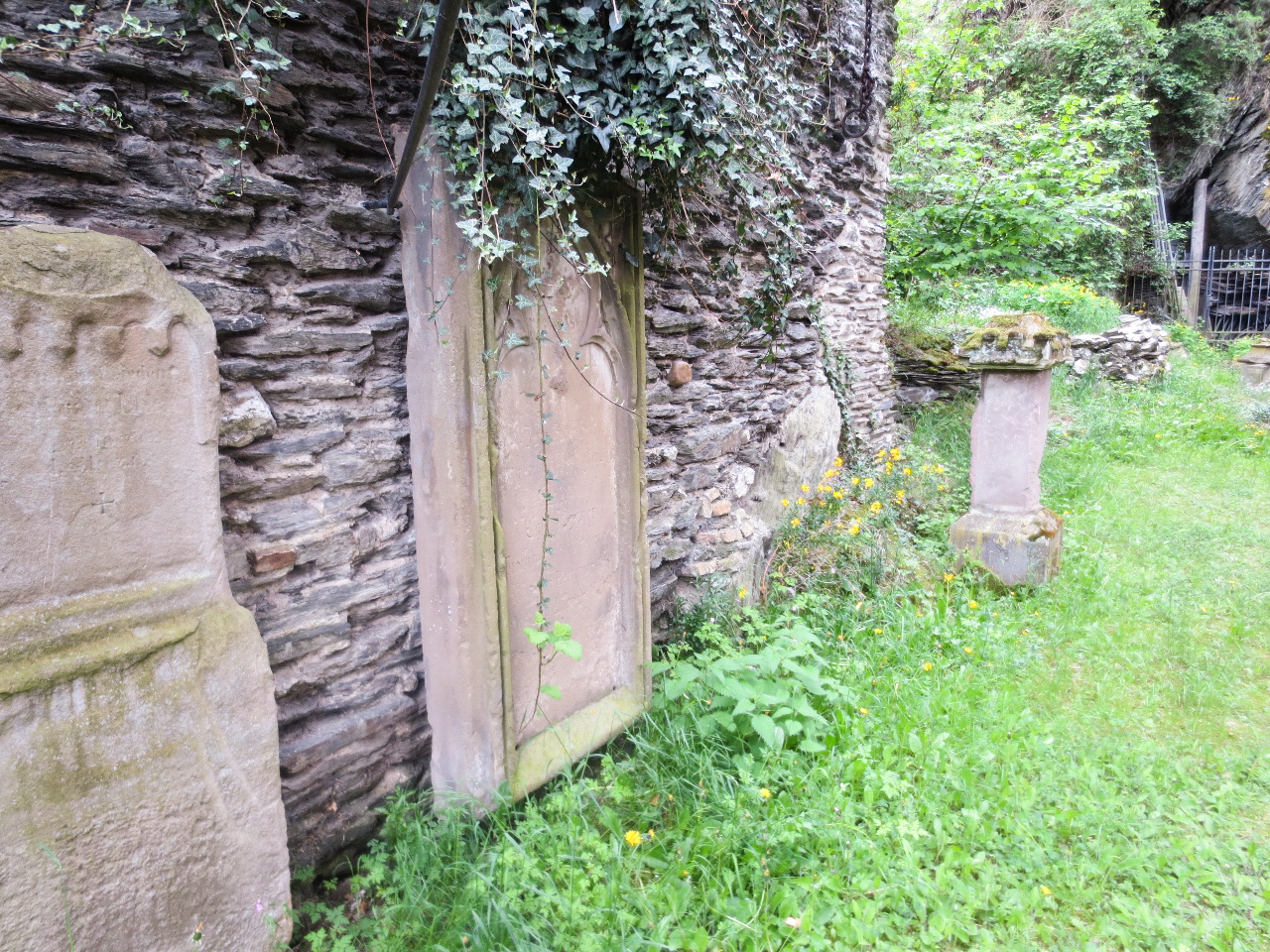
St. Goar and Rheinfels Castle Ruins
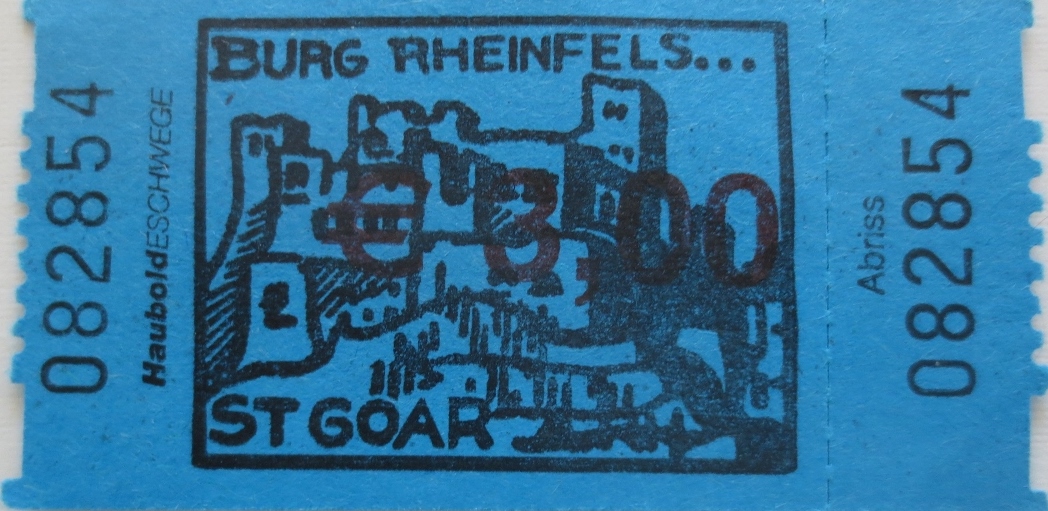
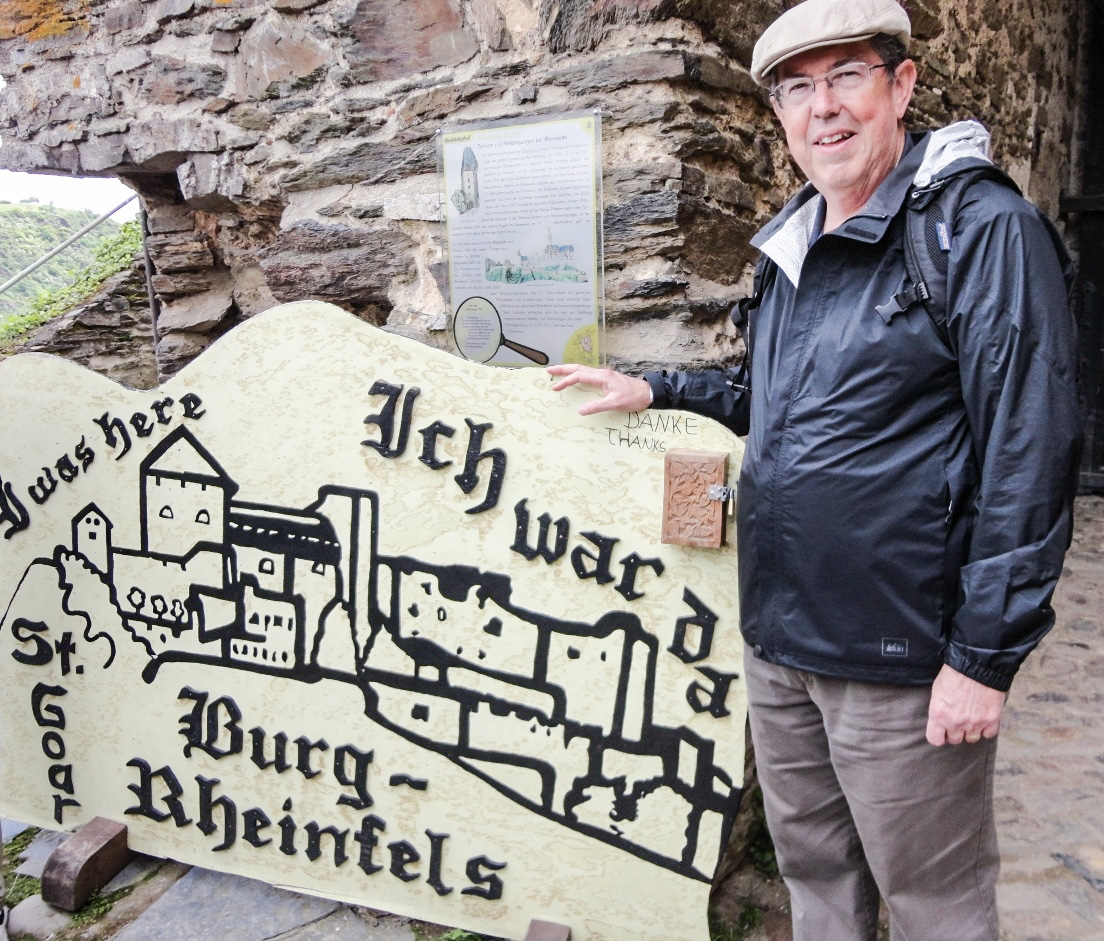
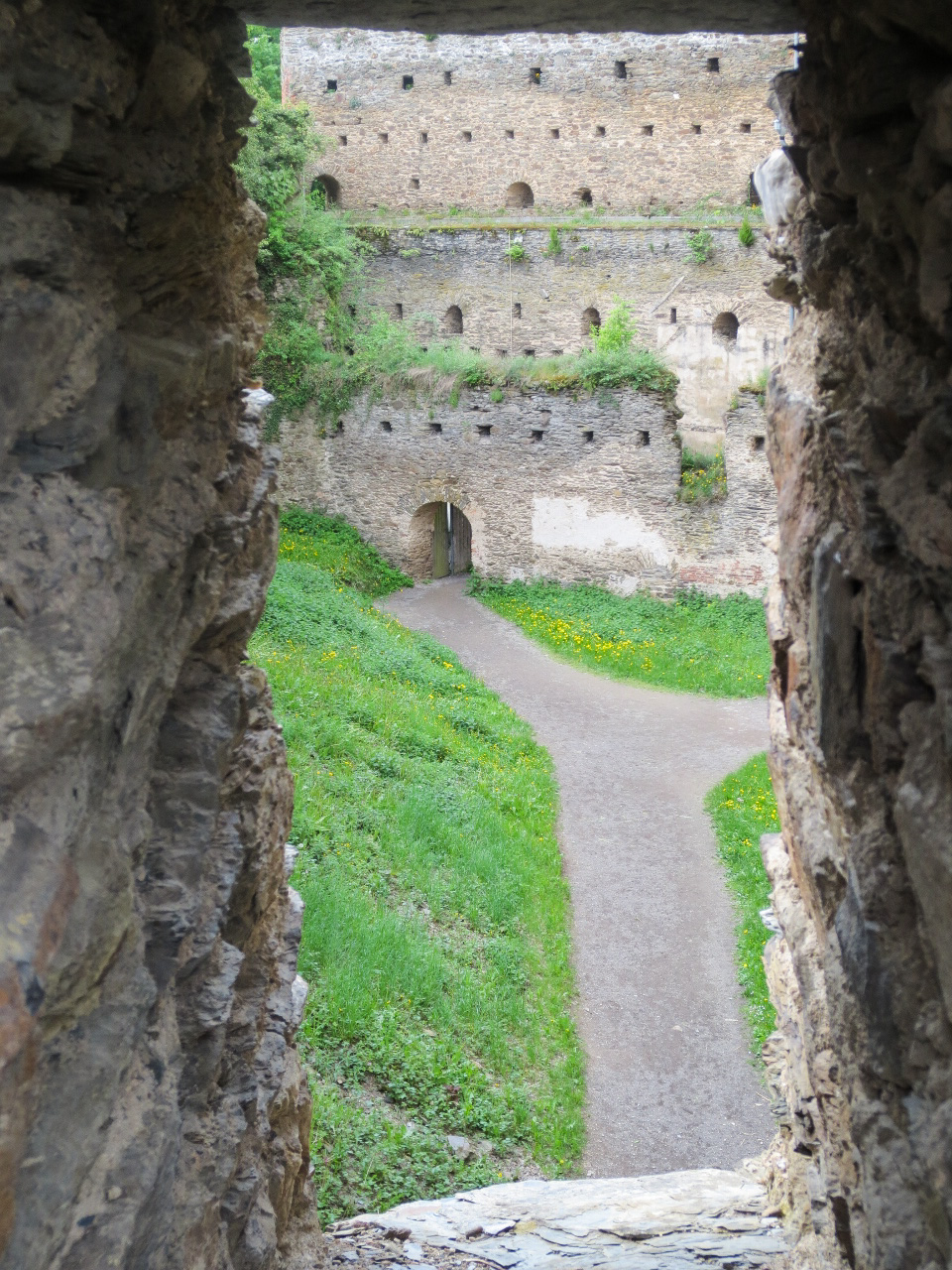
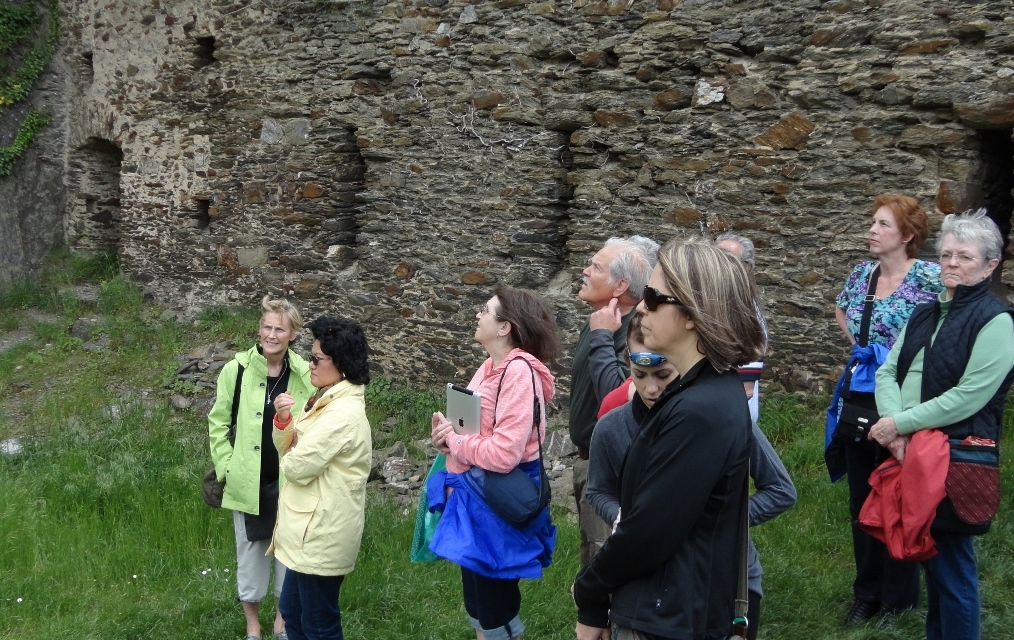
Rhine River Cruise
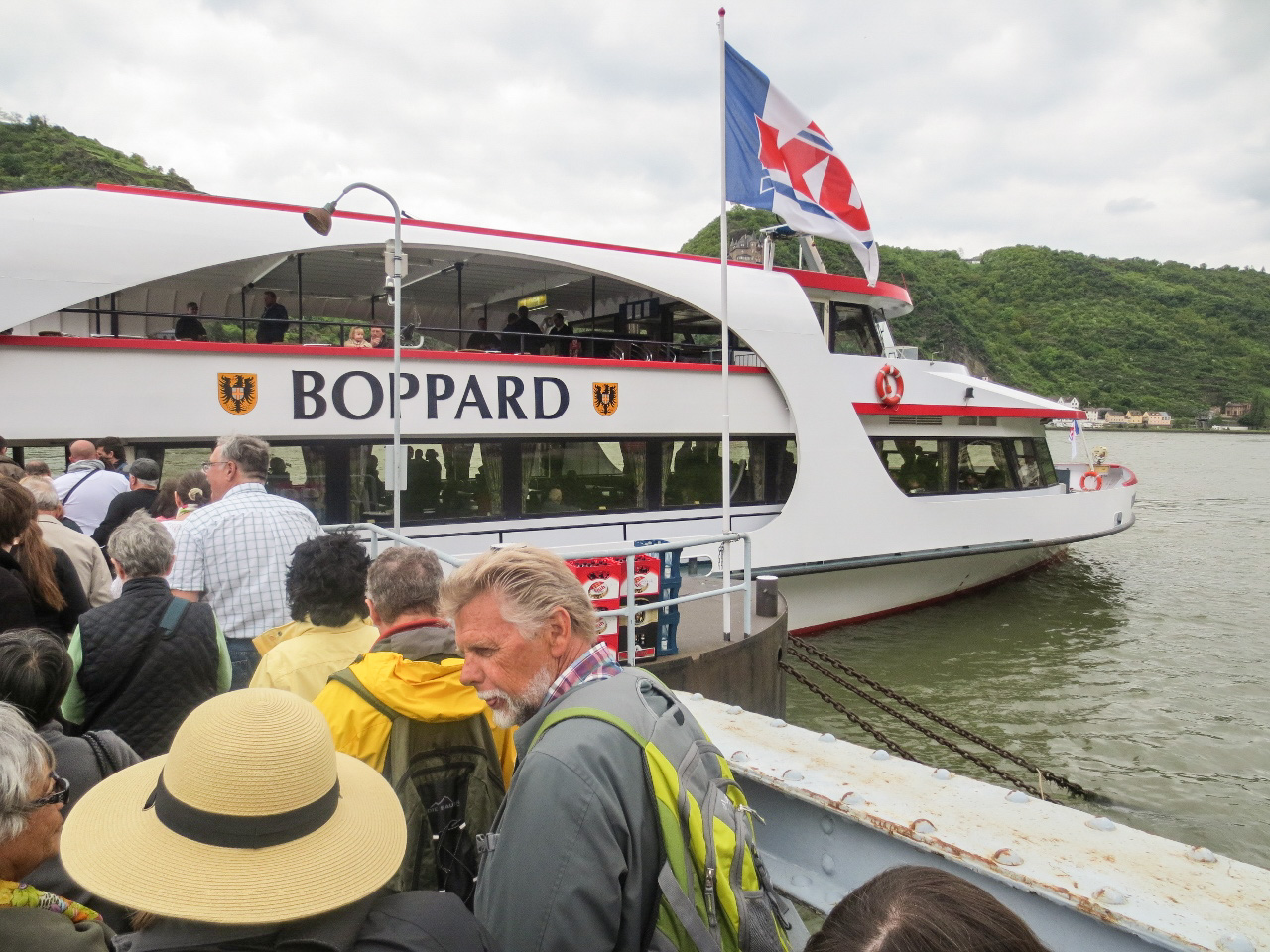
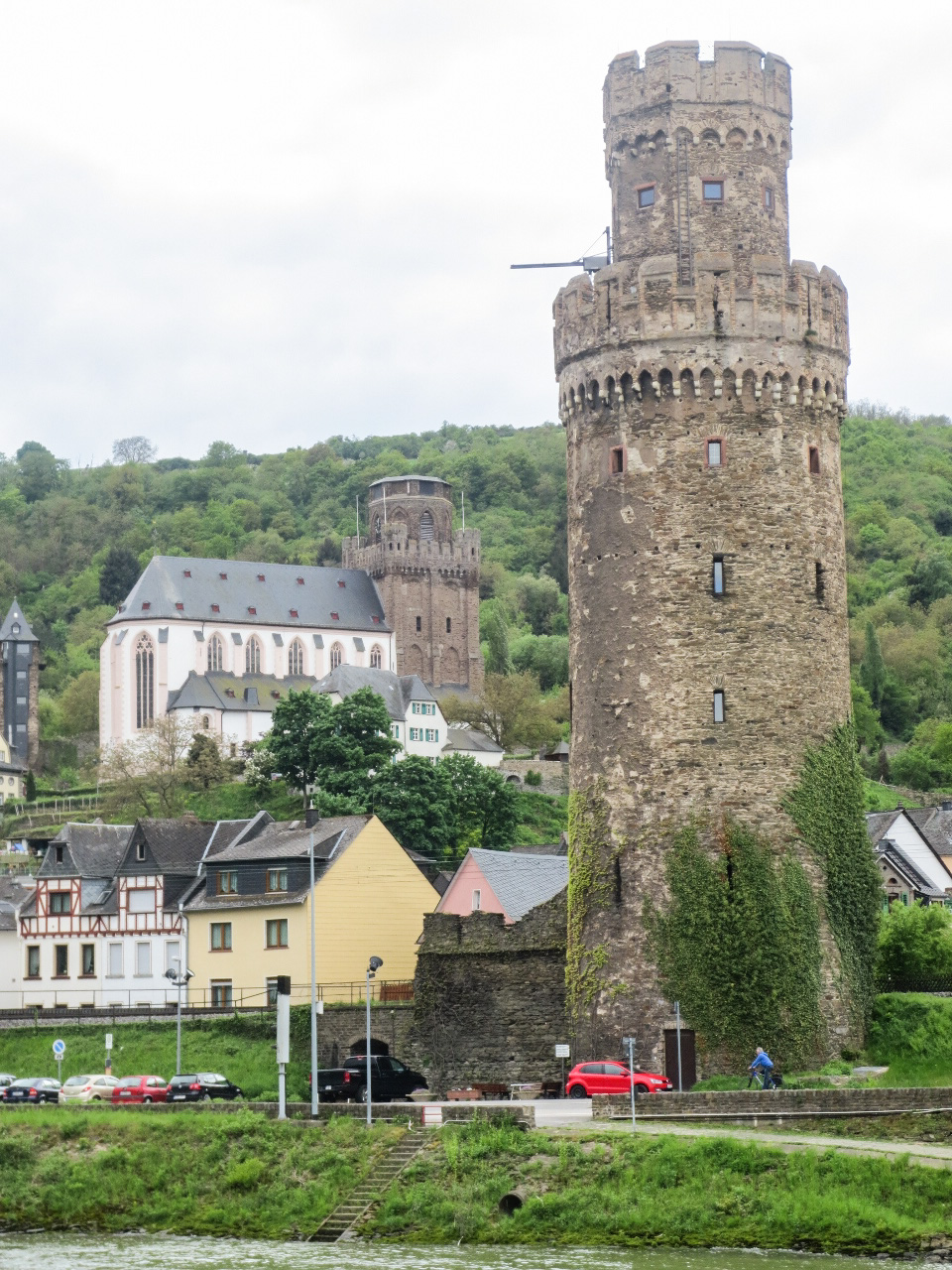
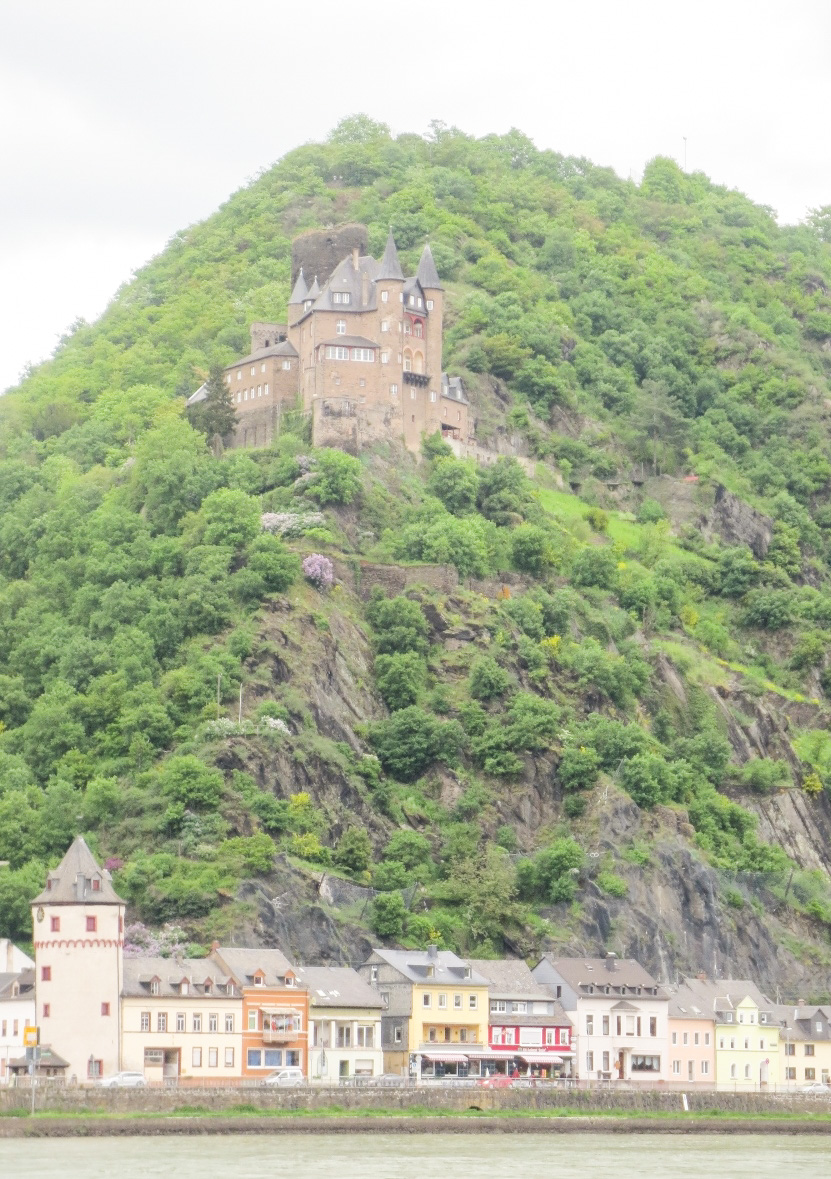
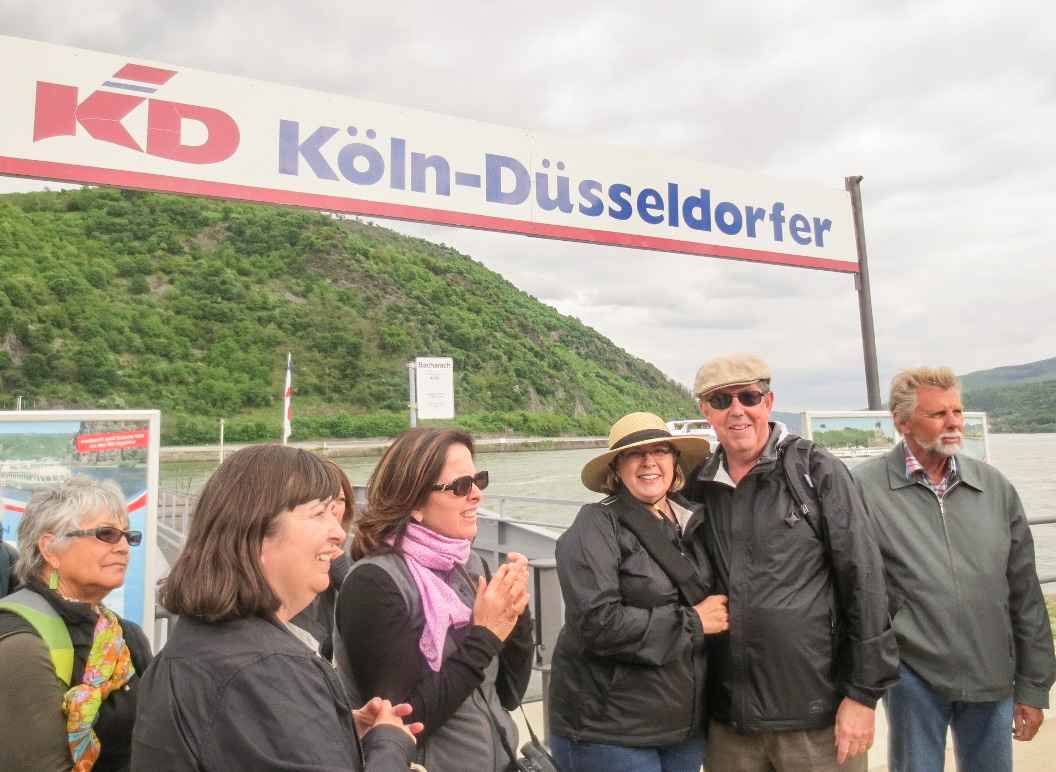
Castles, Castles, Everywhere
We cruised the most scenic part of the Rhine because it’s studded with castles and ruins of a bygone era.
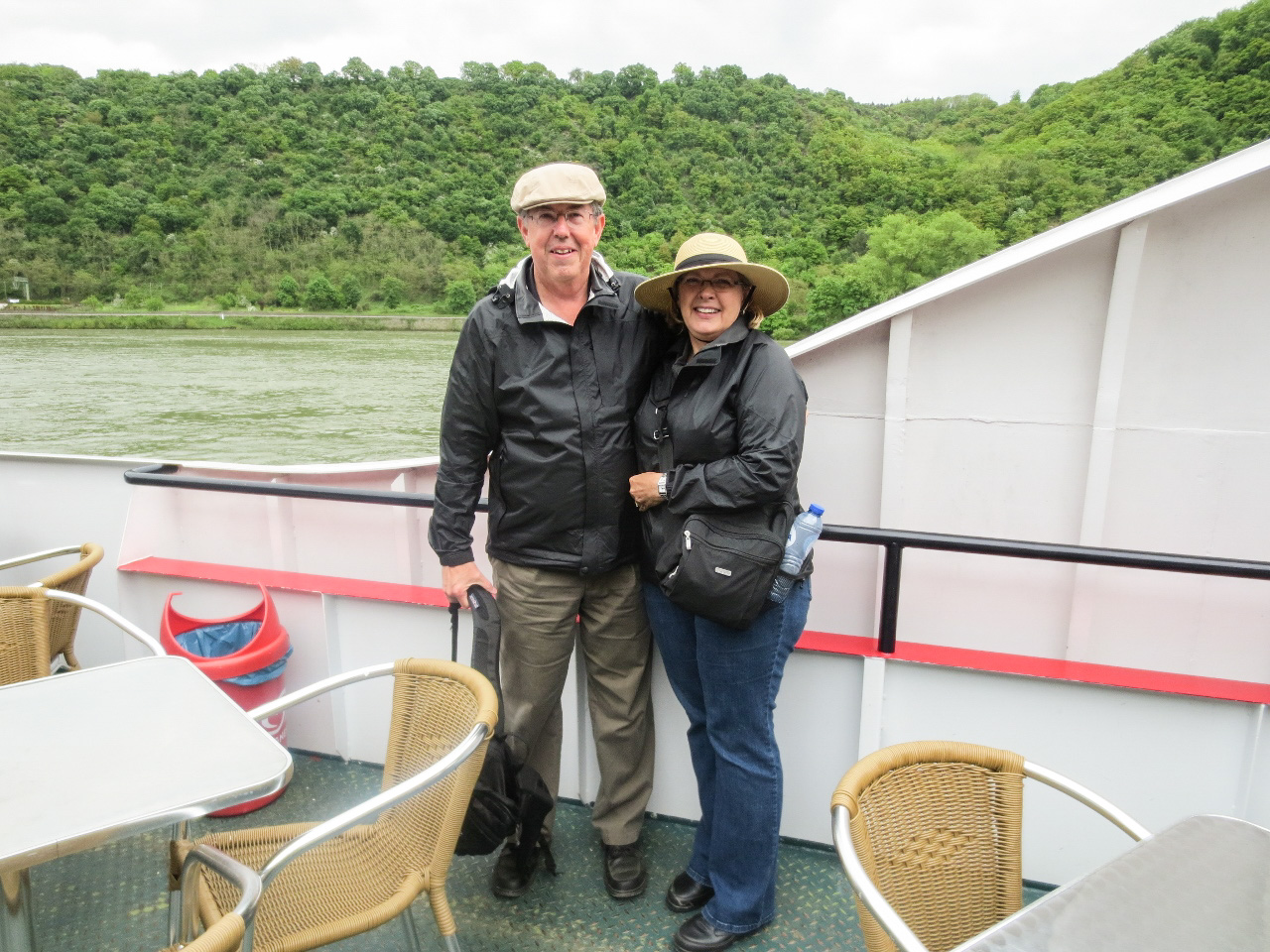
Rothenburg
Rothenberg is a quintessential German medieval city surrounded by a stone wall, turreted towers and cannon ports. Inside was the cutest town ever that reminded us of Disneyland. In fact, Disney used this town and Mad King Ludwig’s castle as inspiration for Fantasyland.
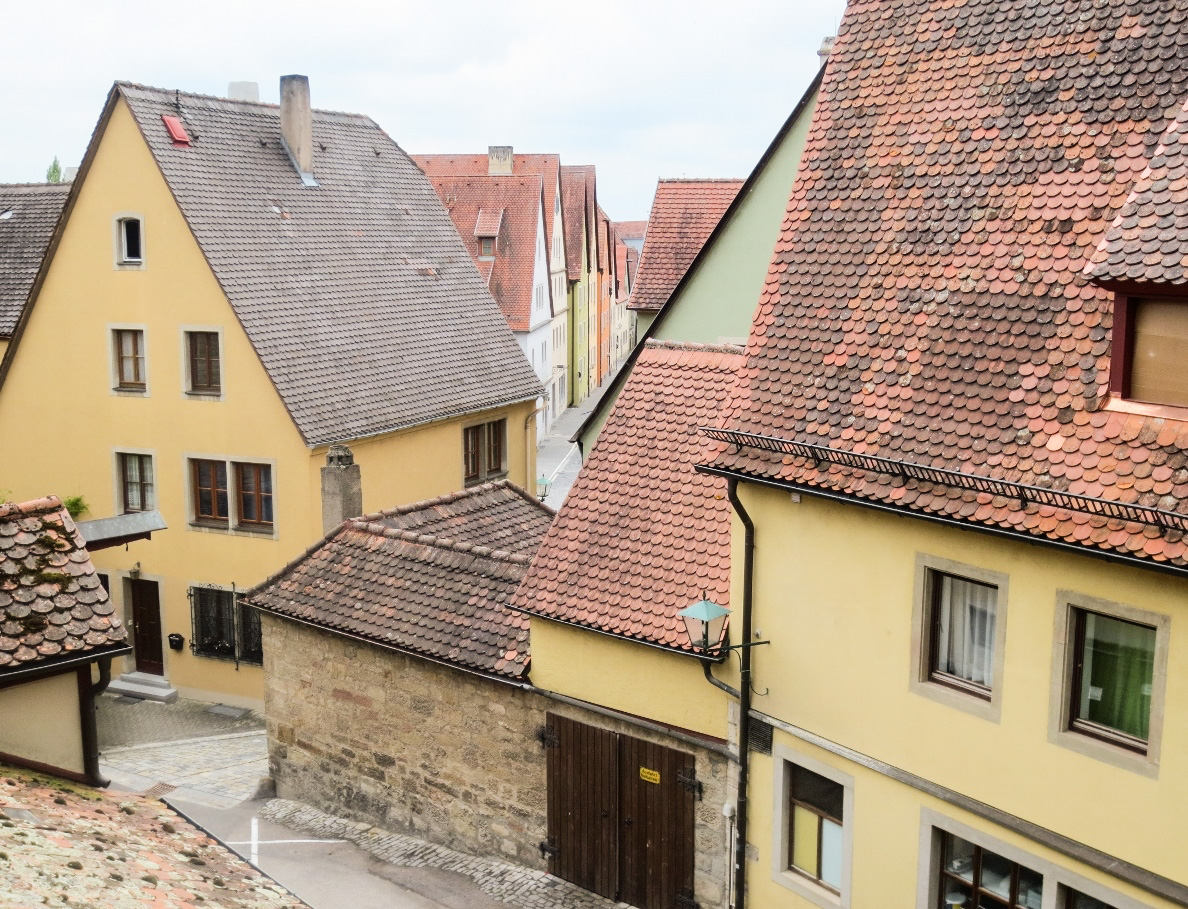
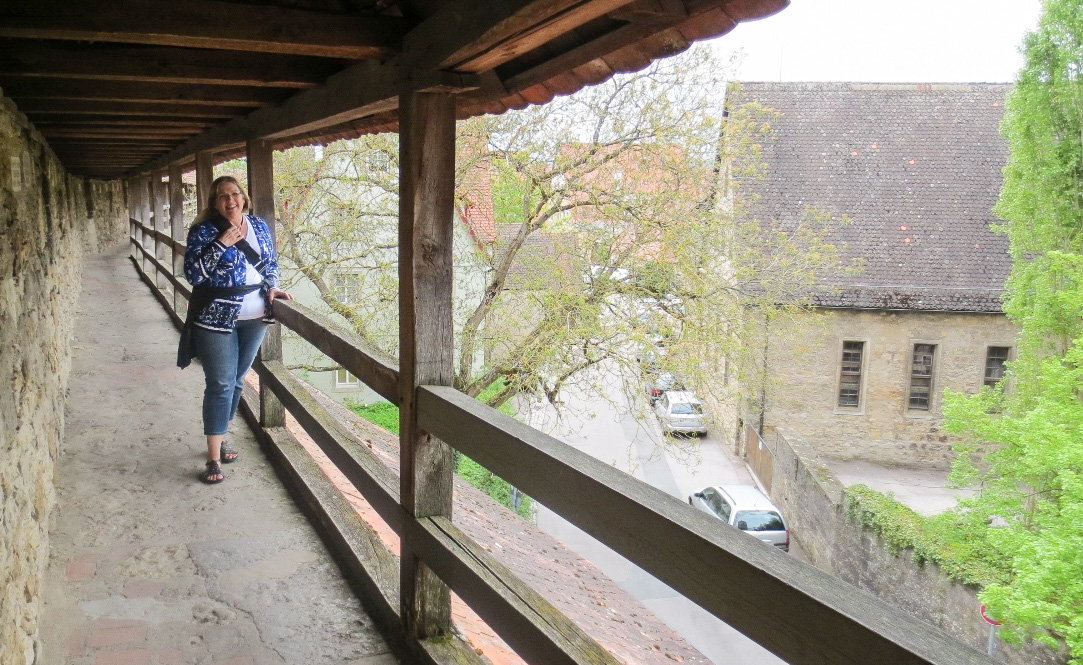
A Wall From Donors
We walked the wall of Rothenburg and got some spectacular views of the town.
Rothenburg was bombed during the last weeks of World War II. Amazingly, people from all over the world donated money to help rebuild the wall. The grateful people of Rothenburg studded the rebuilt wall with plaques engraved with the donors’ names.
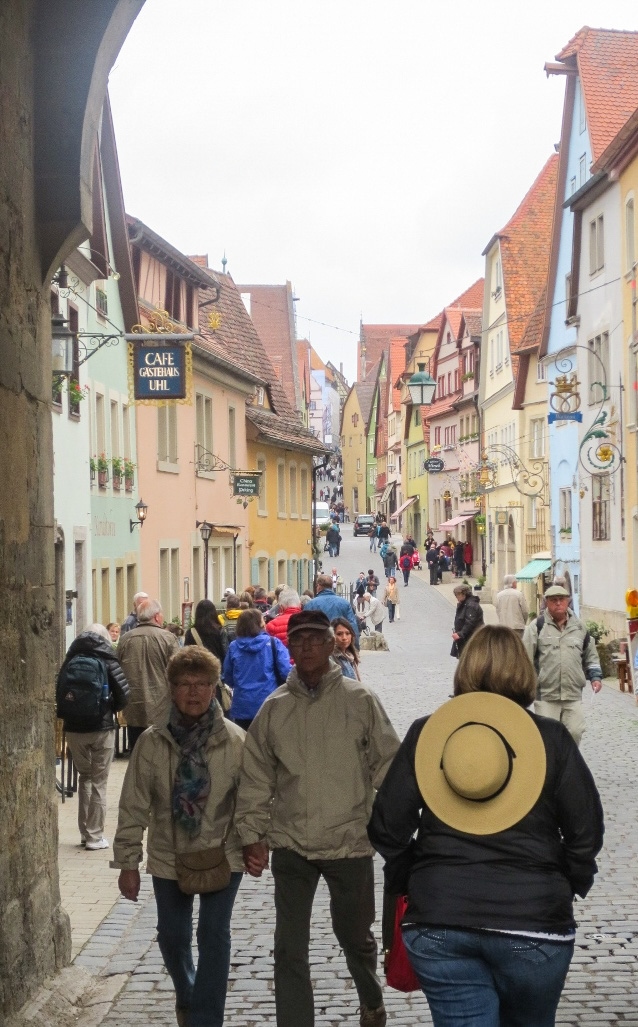
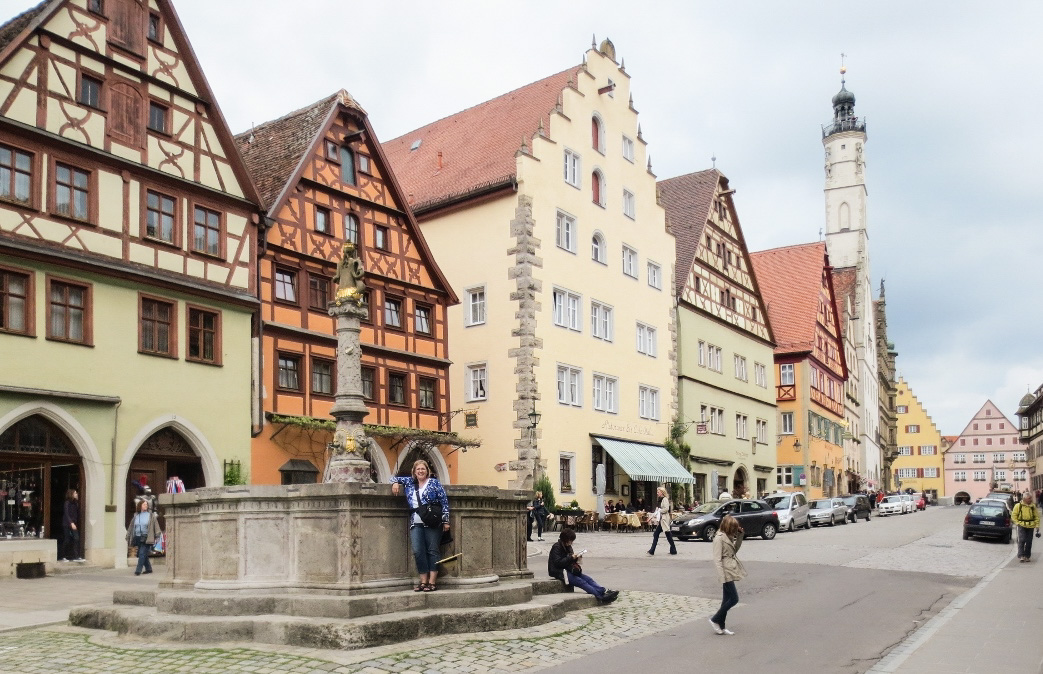
Reverence In Wood
The amazing 35-foot-high Altar of the Holy Blood in St. Jakob’s is over 500-years-old. It took Tilman Riemenschneider, the Michelangelo of German wood carvers, five years to finish it. It is generally considered the world’s finest large-scale wood carving.
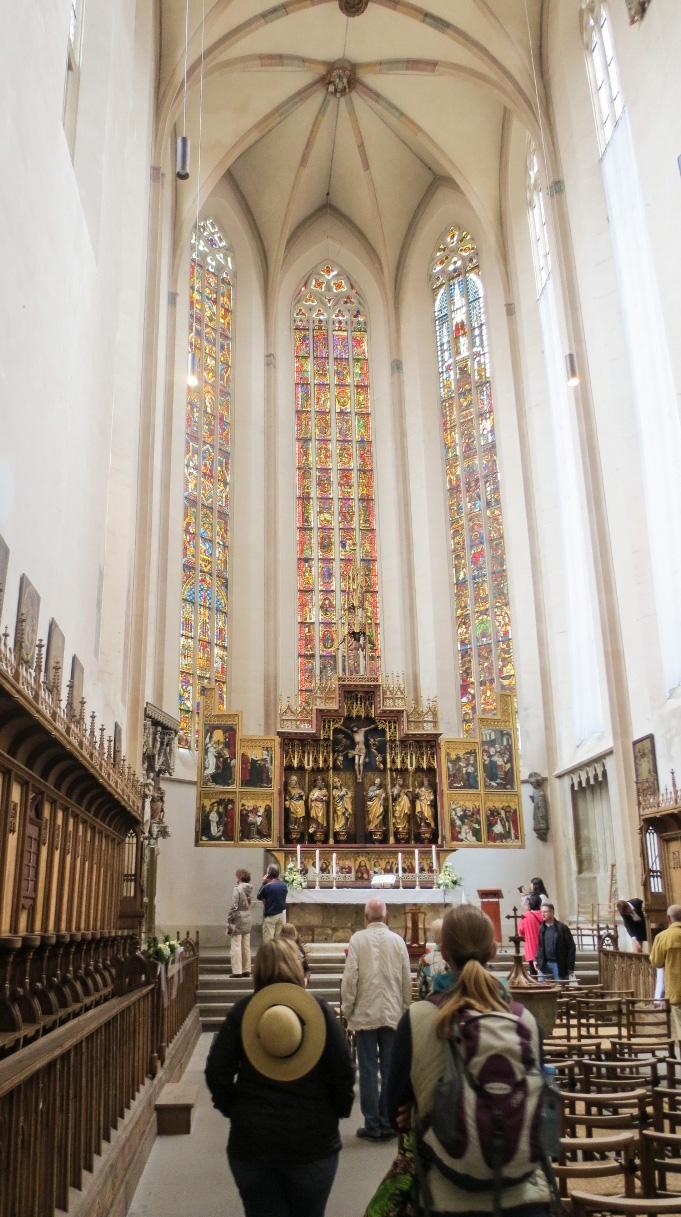
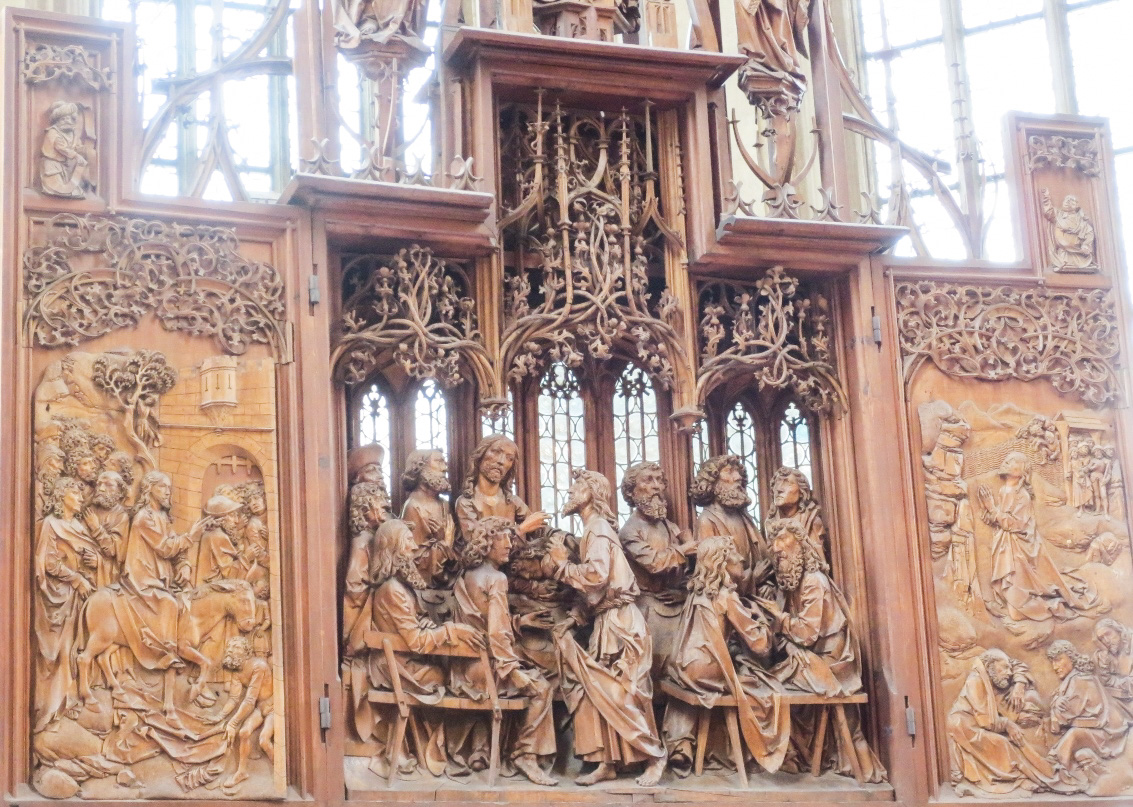
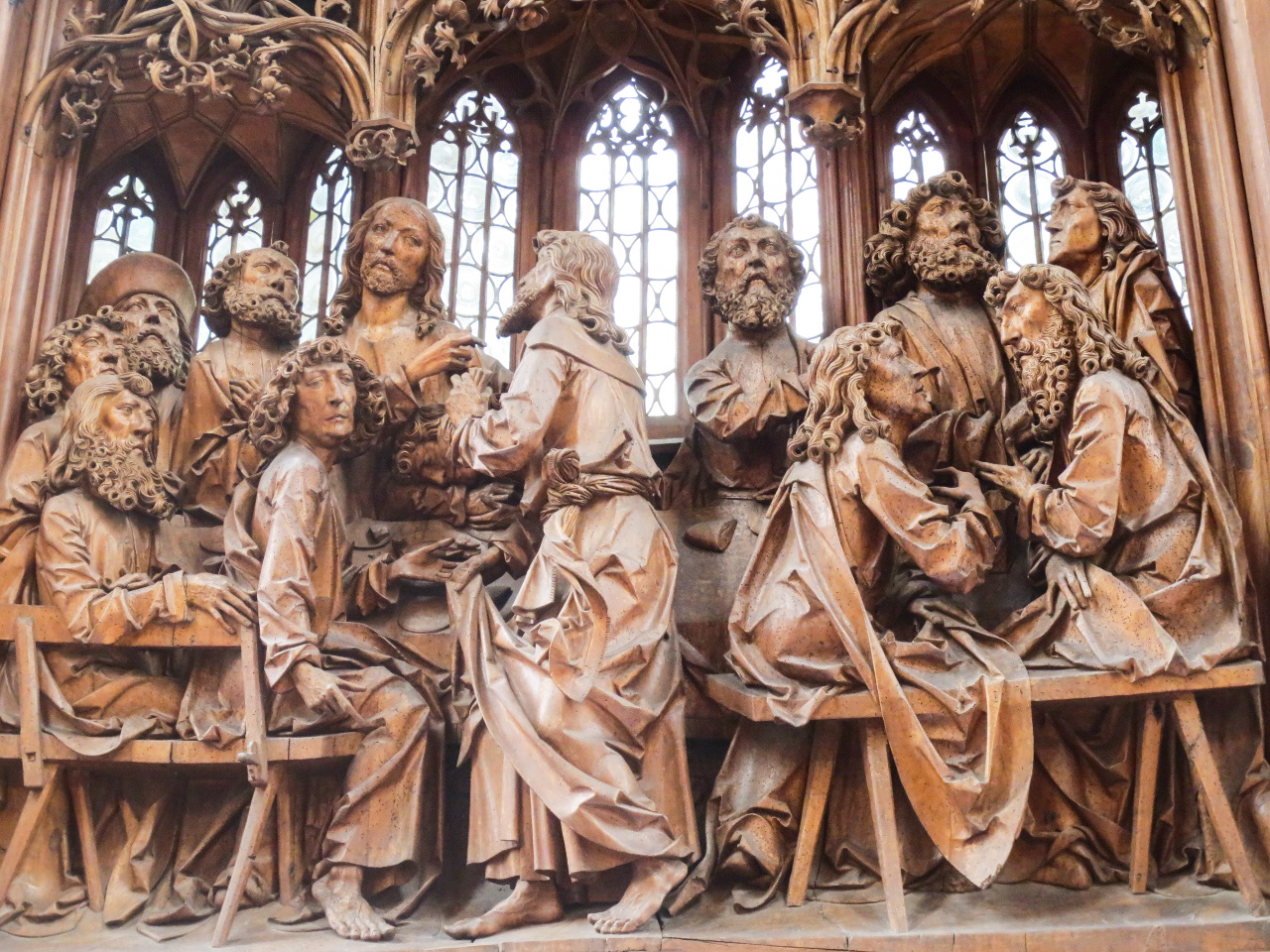
Crime and Punishment
The Crime and Punishment Museum was all about medieval torture (don’t let the IRS see this)! It showcased the medieval criminal justice system including medieval police, criminal law and, of course, all kinds of instruments of punishment and torture.
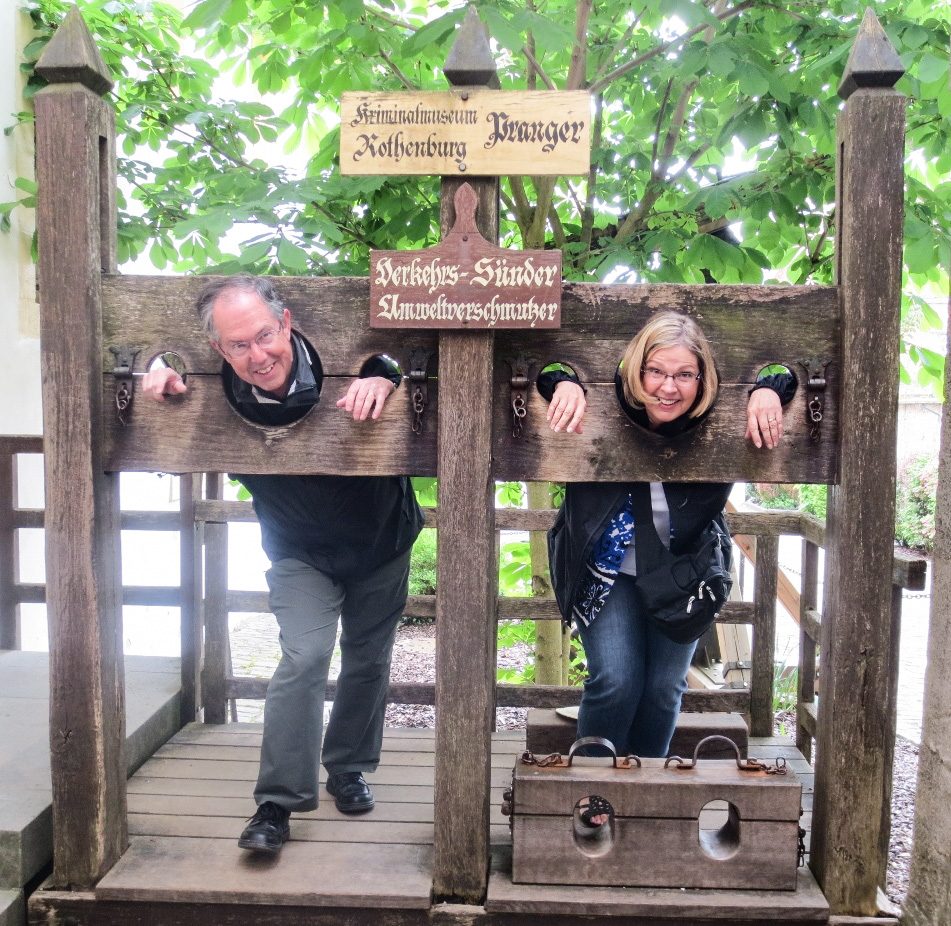
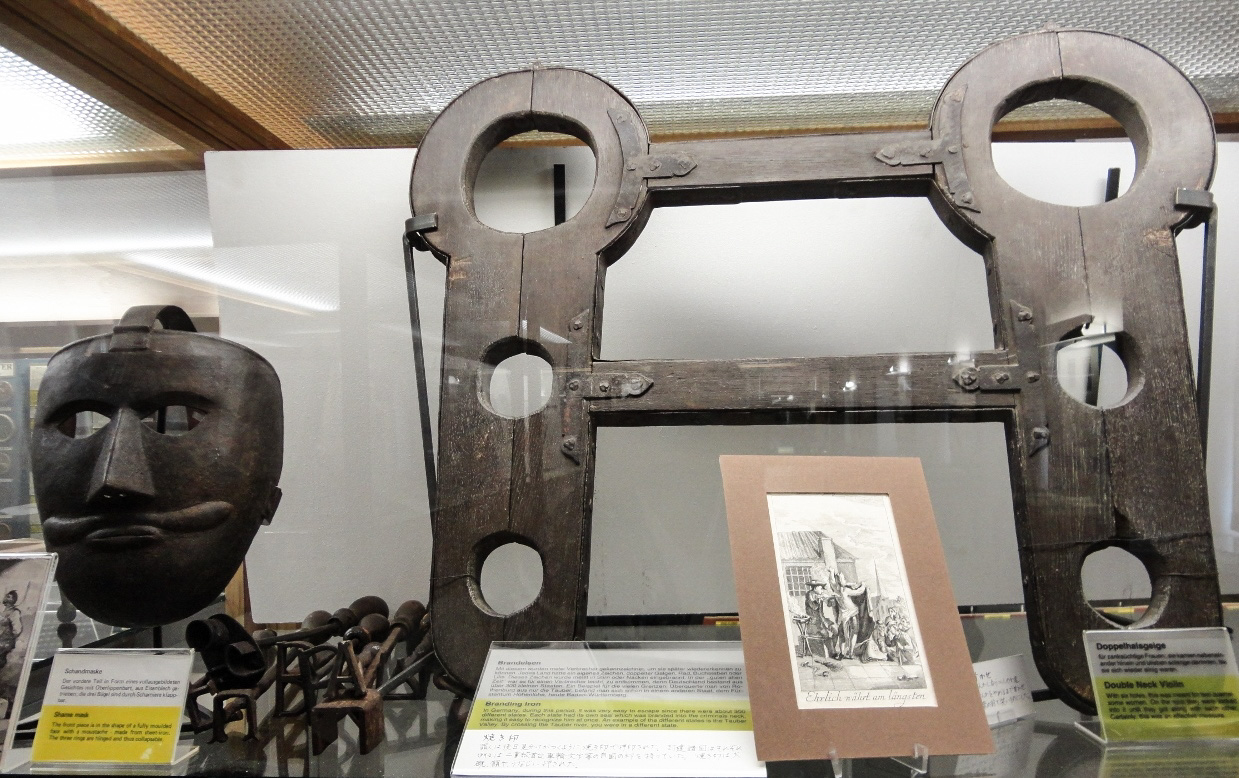
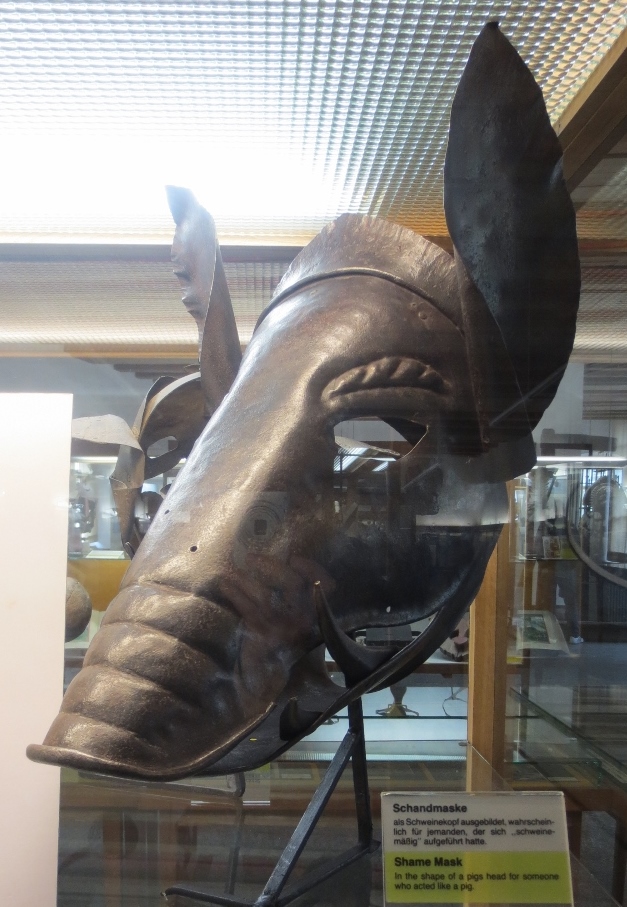
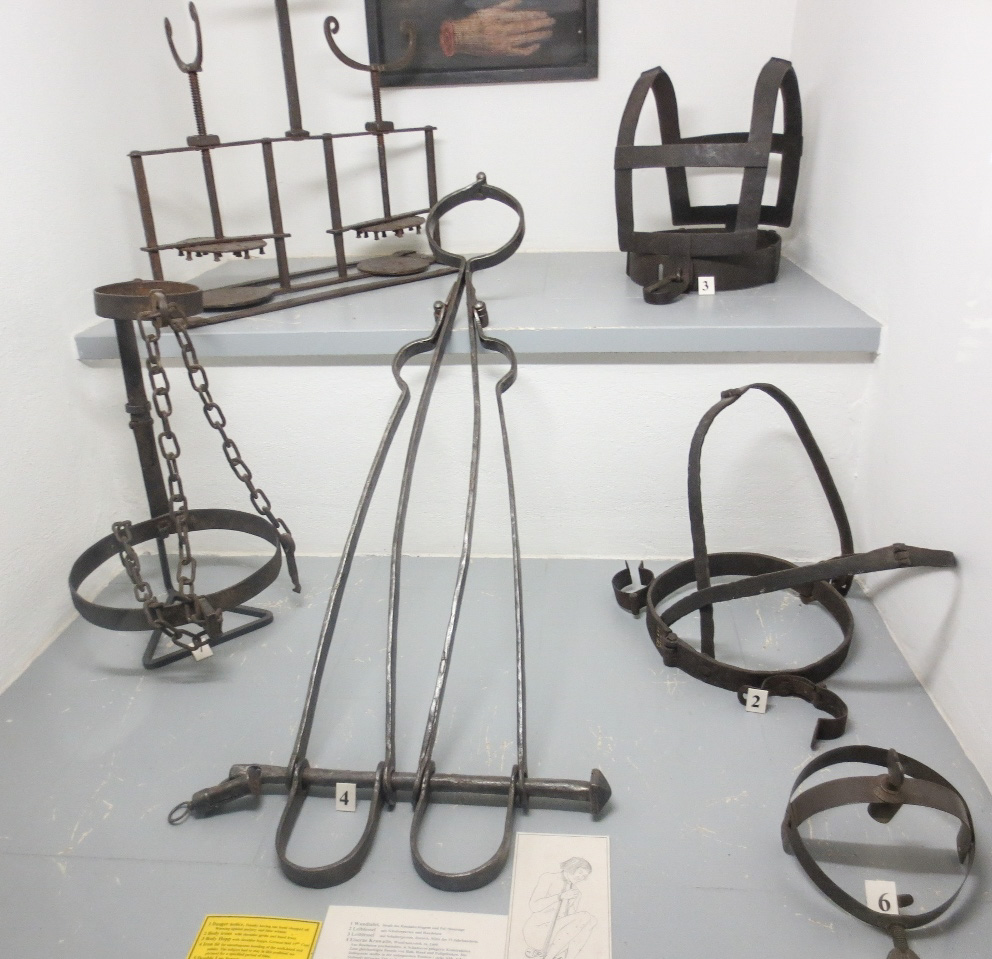
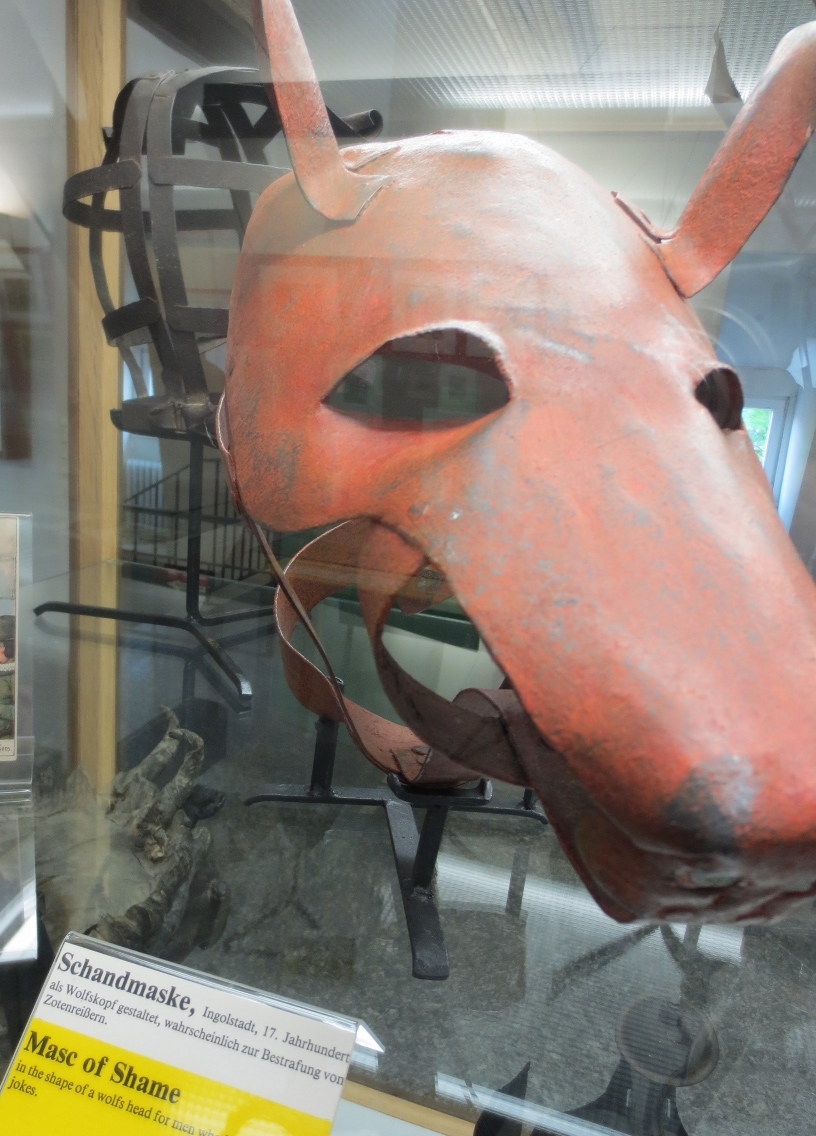
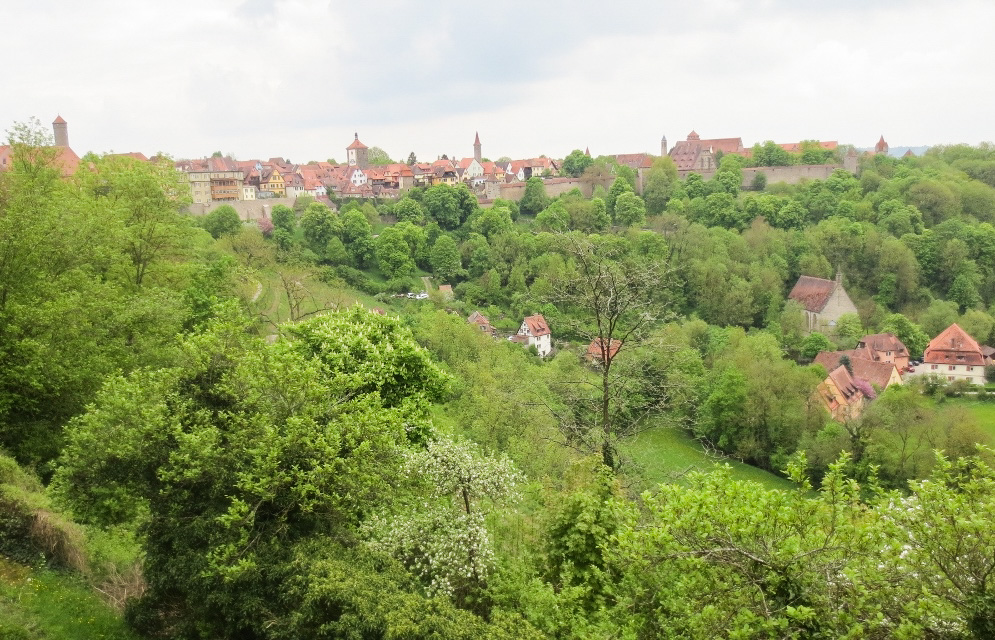
Sequoias in Rothenburg?
Beautiful gardens overlooked the surrounding countryside. We started talking with a couple from Rotterdam about the giant Sequoia trees in California. We told them to email us if they ever came to California and we would take them to the big trees. If that ever happens, it would be very interesting as they didn’t speak English very well.
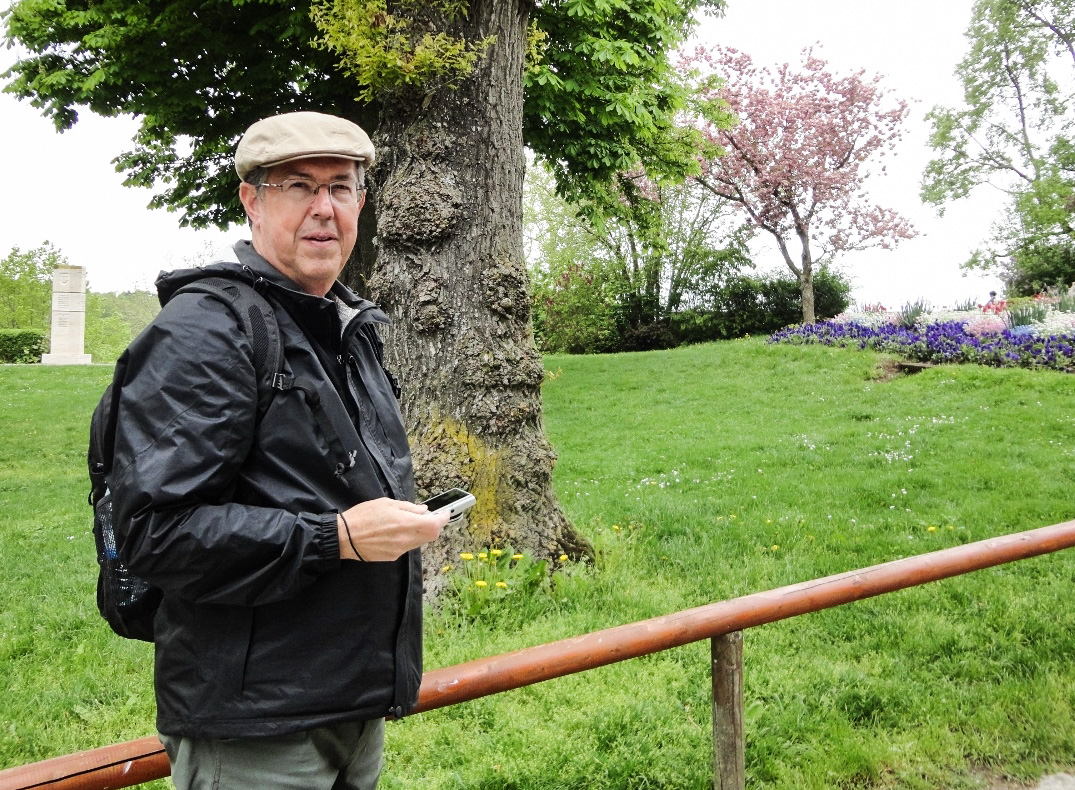
Special Christmas Cards
Anneliese Friese, was the cutest 83-year-old lady who enjoyed telling stories to her customers, most of which were about Rick Steves. And she had a lot of them because she met Rick when he was only 17-years-old. She was especially proud that she was his friend and proudly displayed all the Christmas cards he had ever sent her.
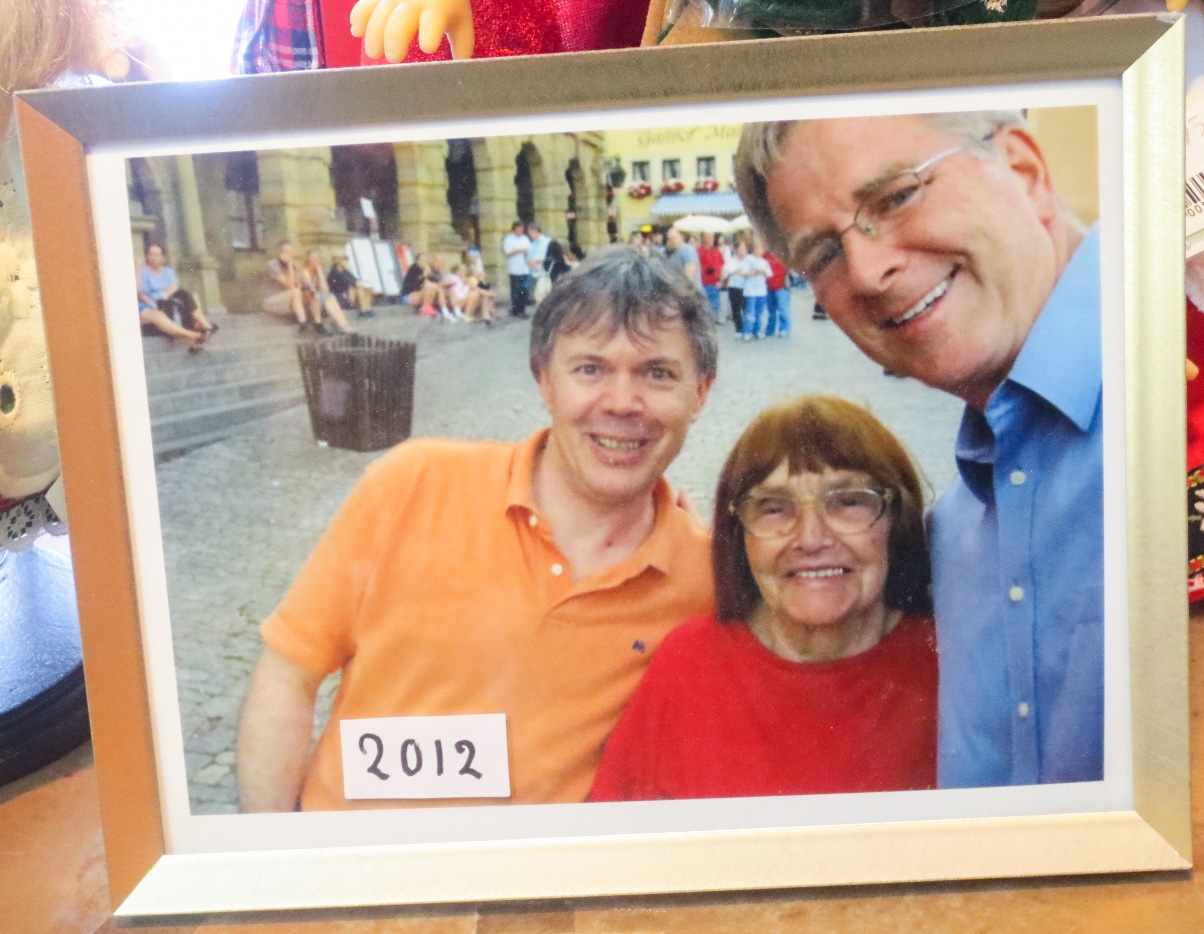
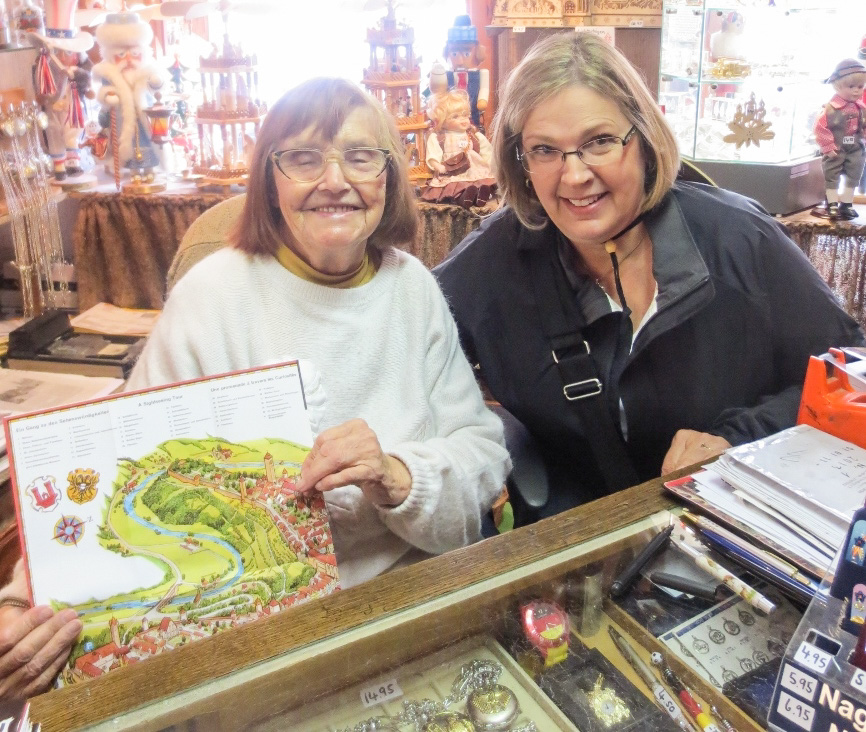
Delightful Dinklesbuhl
We were supposed to spend the night in Rothenburg but it was completely booked up by a convention of acupuncturists. No kidding! So we stayed in the neighboring village of Dinklesbuhl. It was never bombed in WWII so it retained its historic look and the medieval night watchman still walks the streets and blows his horn to signal that all is well.
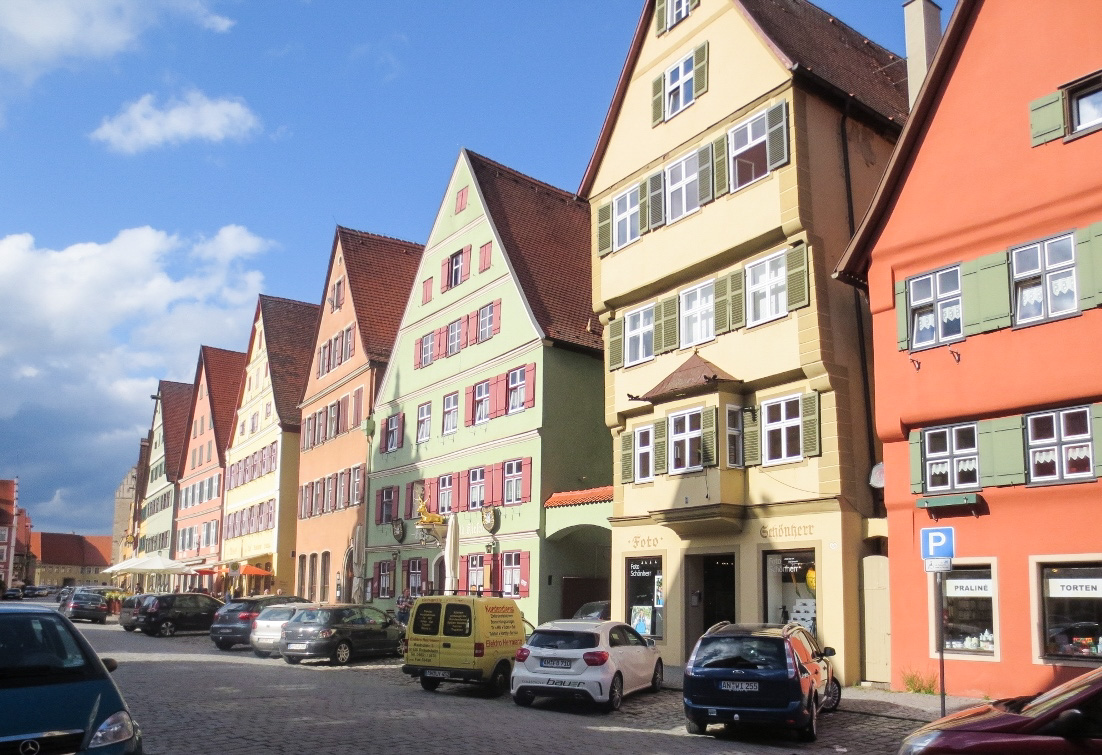
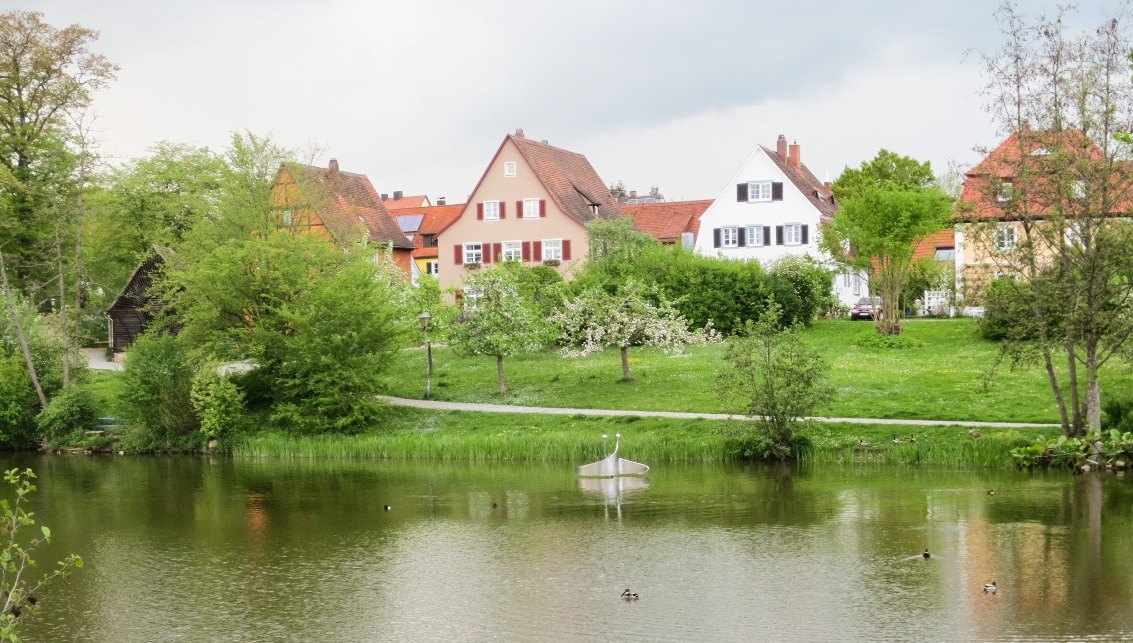
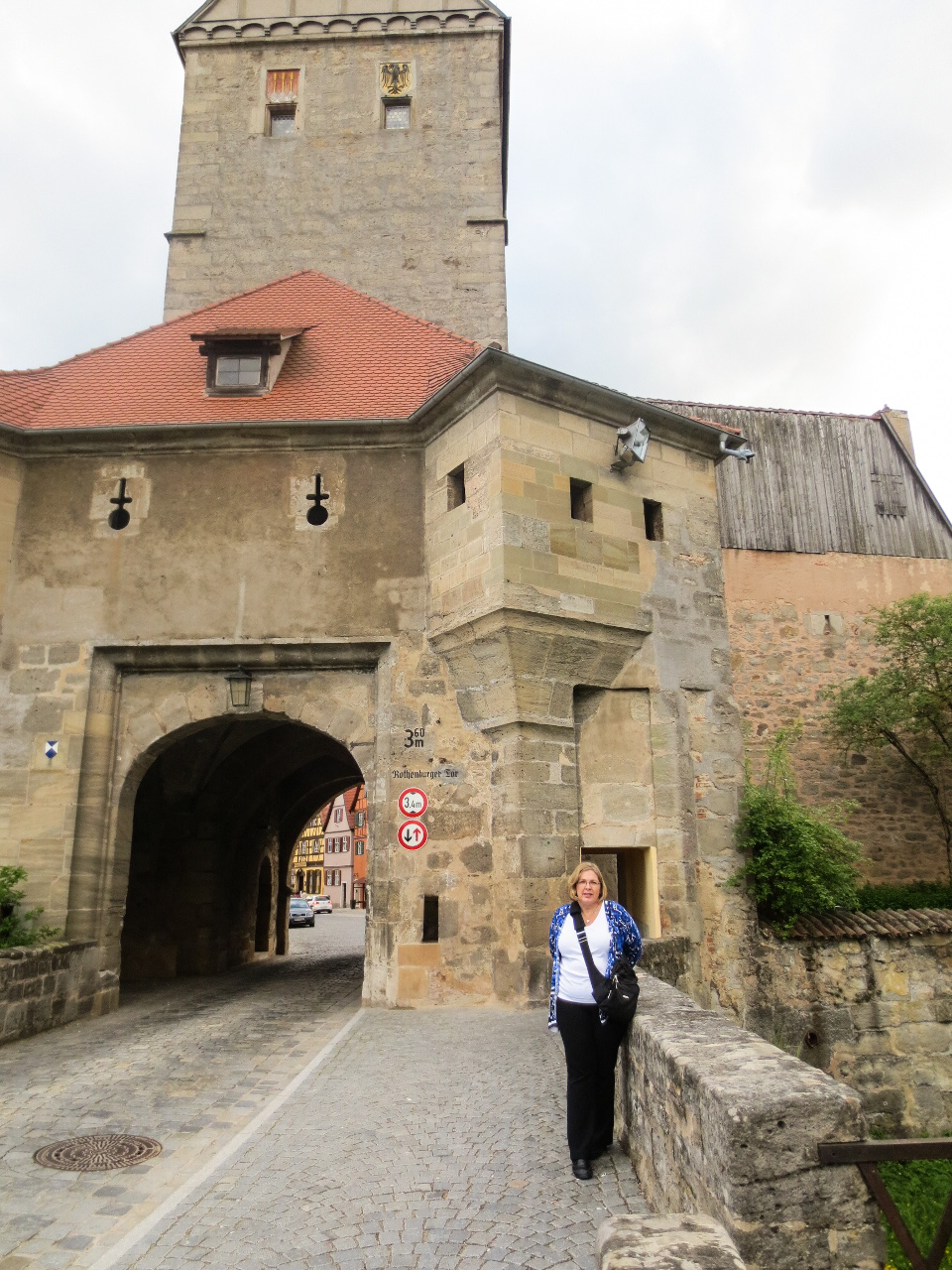
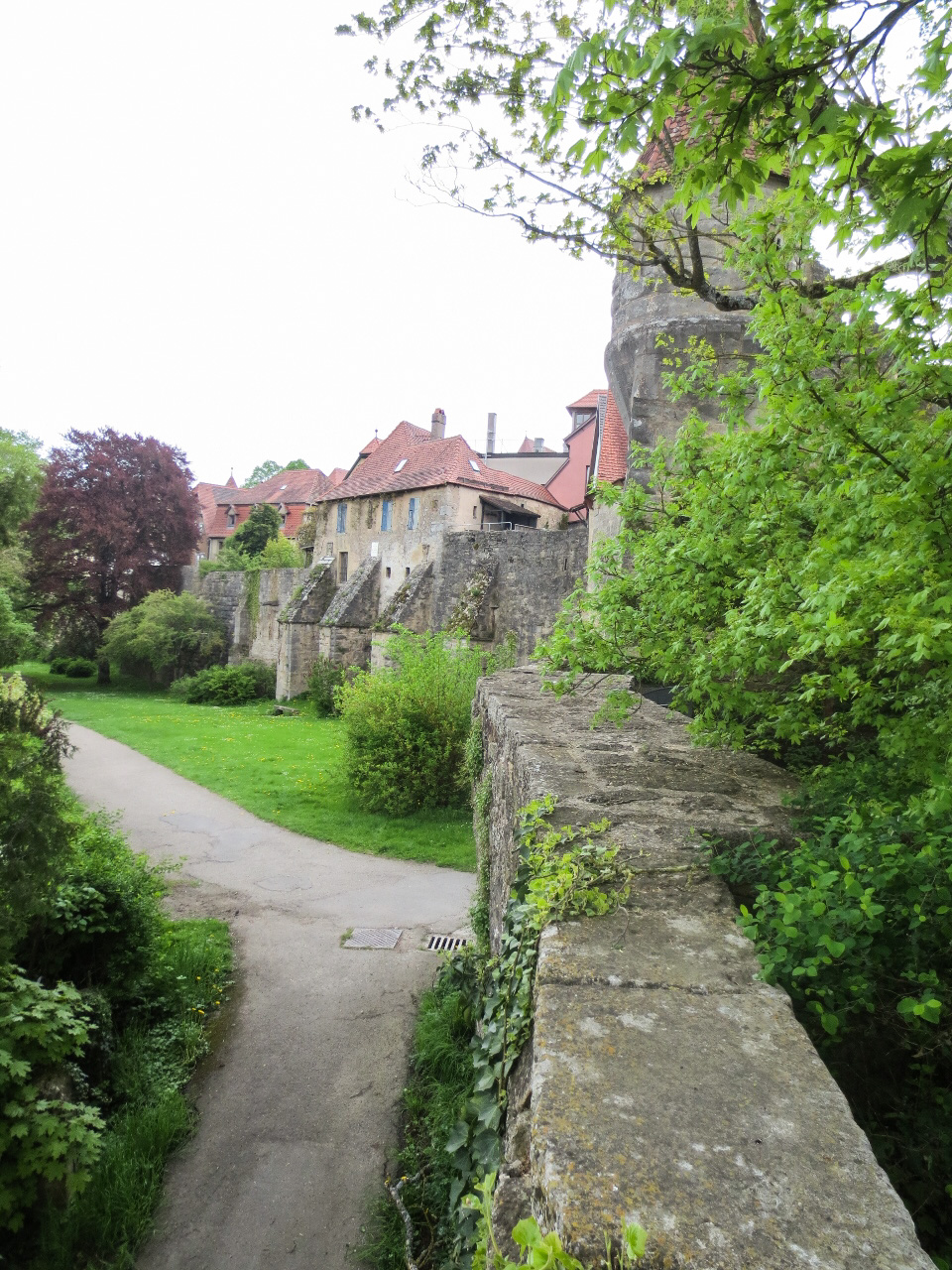
Somber Dachau
The Nazi concentration camp of Dachau is now a memorial to all those who suffered and died there. It was difficult to keep my emotions in check as I considered what took place there. Twice I found myself weeping as it was just too difficult to wrap my mind around the horror of it all.
Dachau was a labor camp for men where many died from over exertion and starvation. The camp was the first to be opened, about a month after Hitler took power, and was not liberated until twelve years later by the US Army. The museum is in the same building where the prisoners were first taken and stripped of all personal items including clothing; just the beginning of the dehumanizing process.
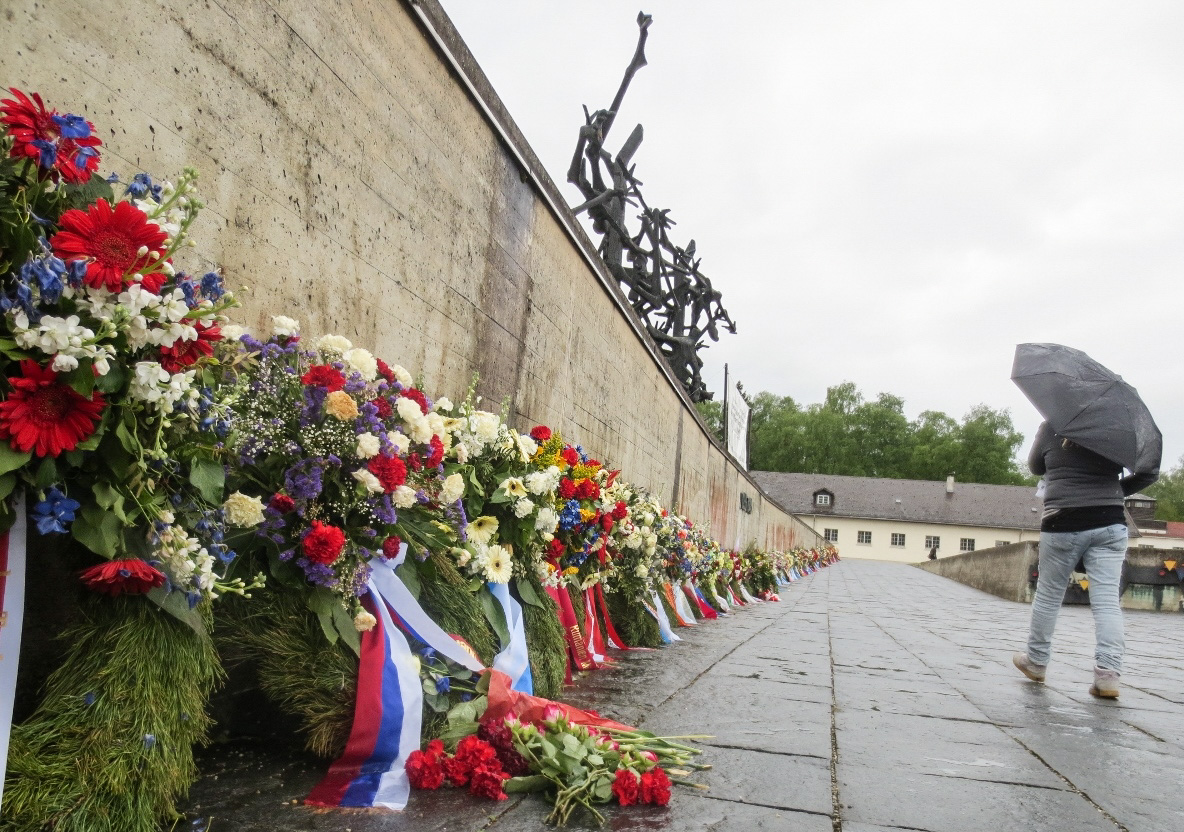
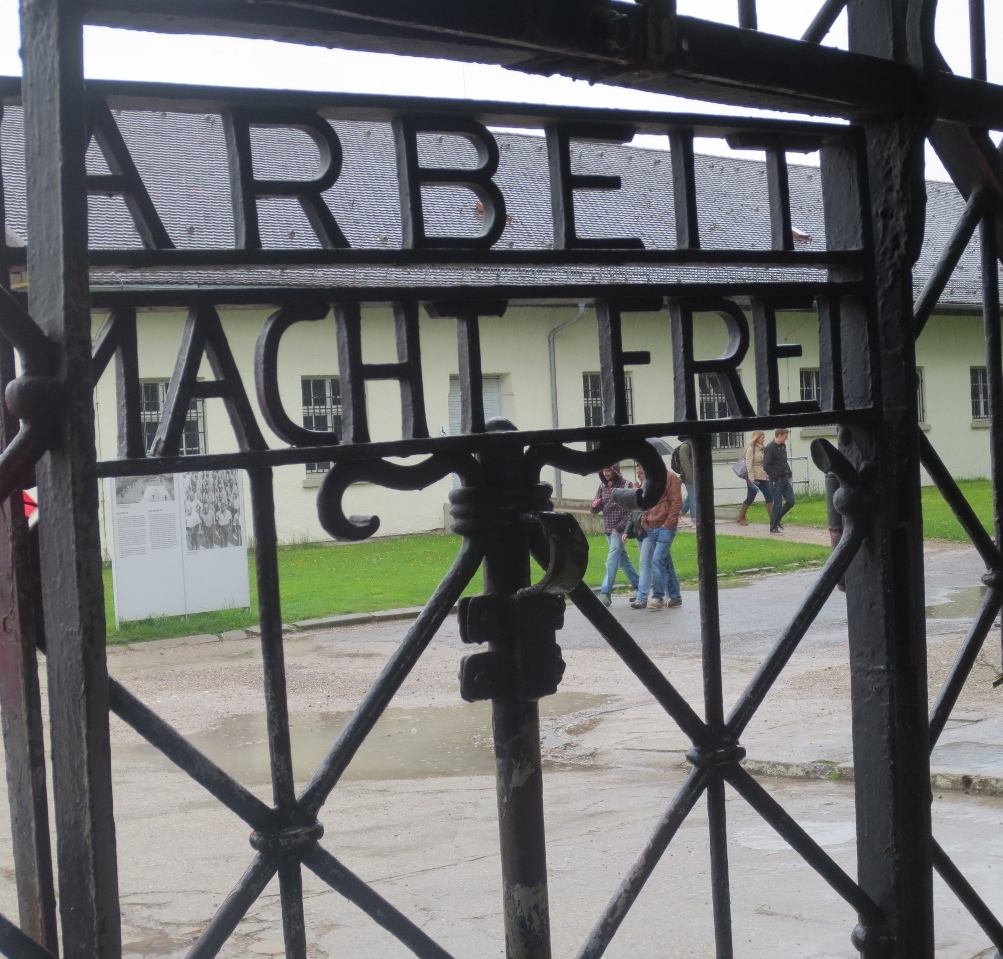
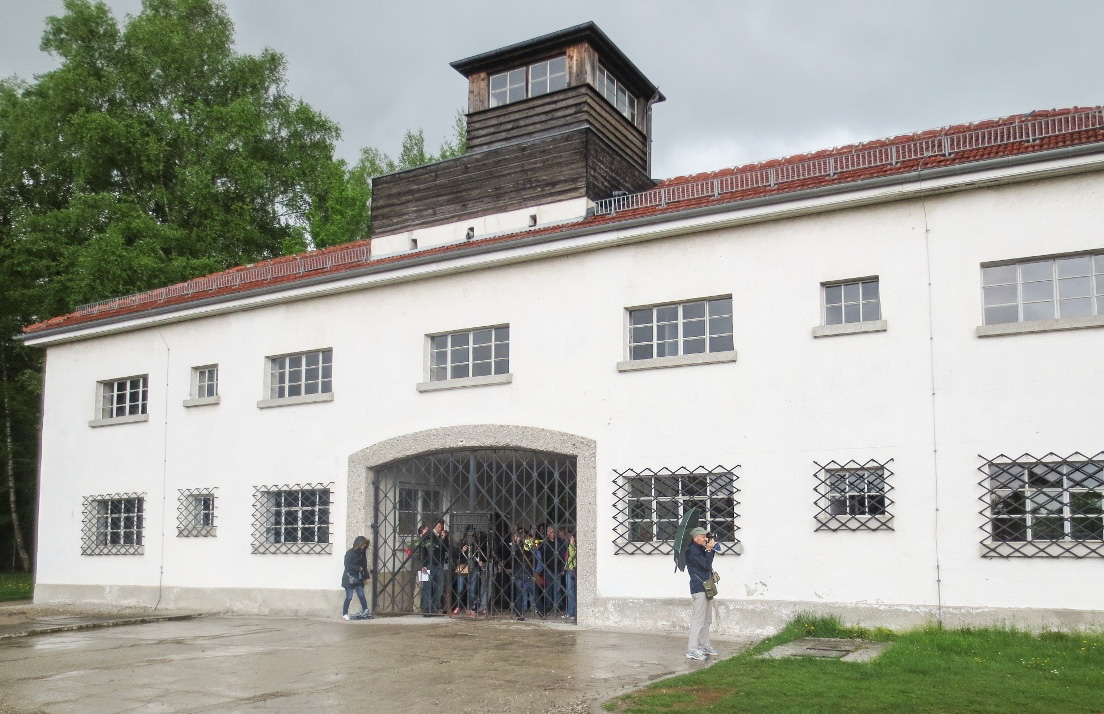
Wieskirche, Little Church in the Meadow
Rococo Reality
Wieskirche, or “little church in the meadow,” is Germany’s greatest Rococo-style church. The story goes that in 1738, tears were seen on a dilapidated wooden statue of the Savior. The miracle resulted in a rush of pilgrims to see it. At first, a small chapel was built to house the statue but they quickly realized it was way too small for the number of pilgrims. So they built the Wieskirch. Two words: ABSOLUTELY STUNNING!!
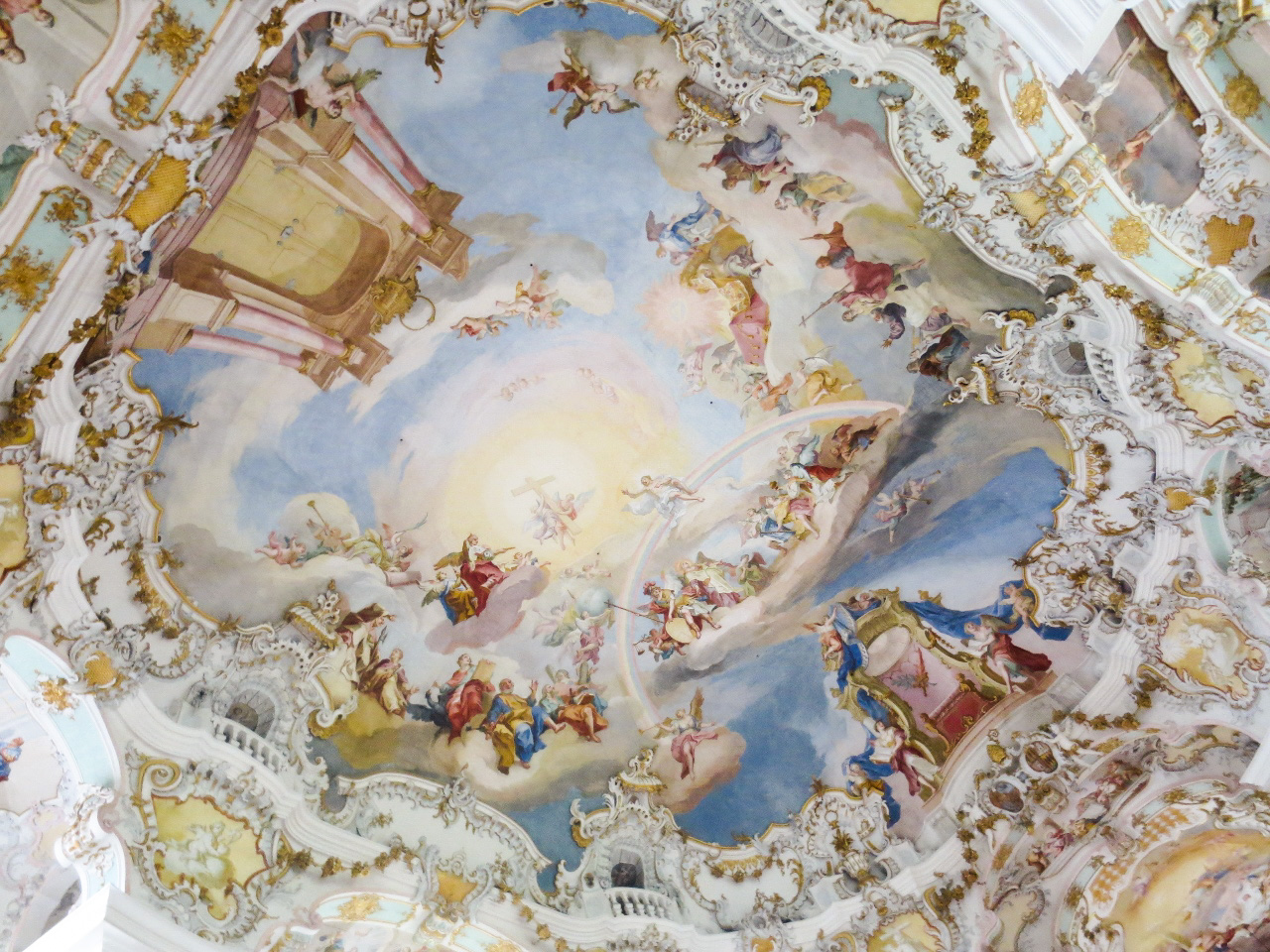
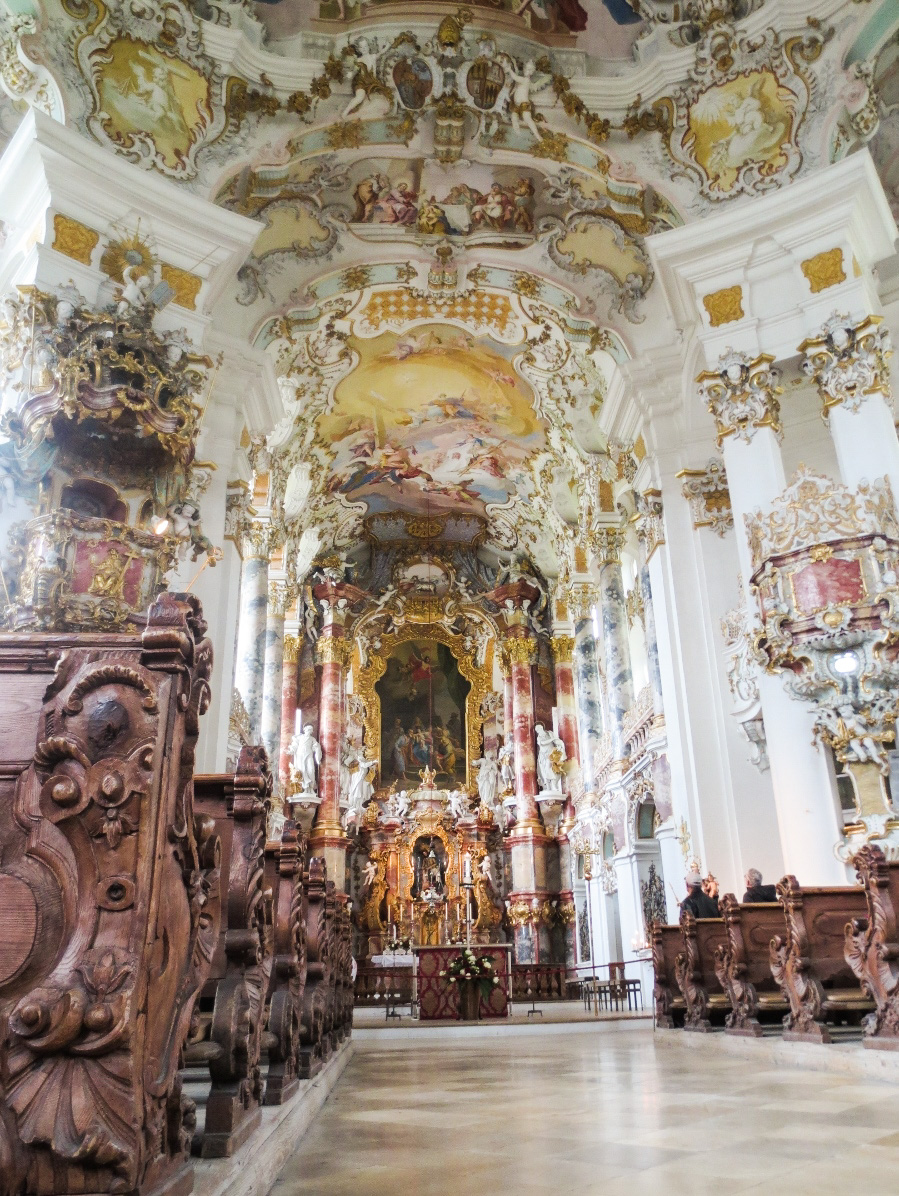
“Mad” King Ludwig’s Castles
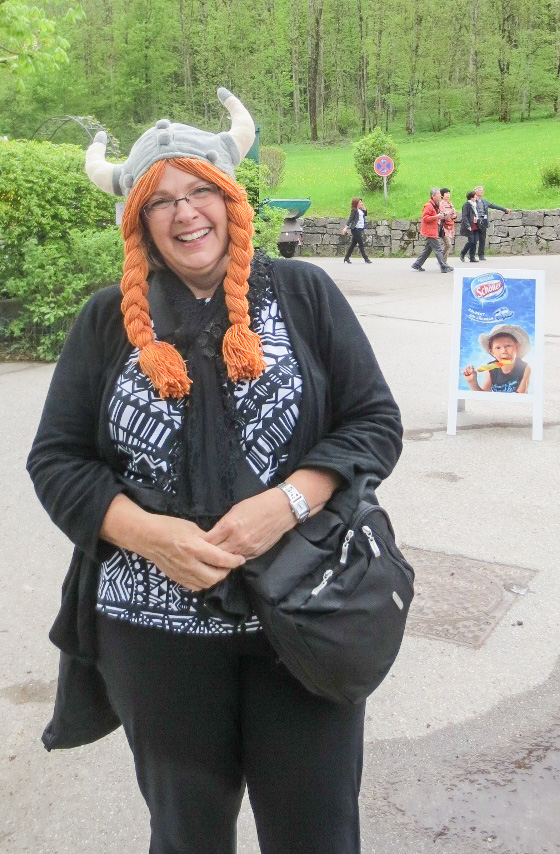
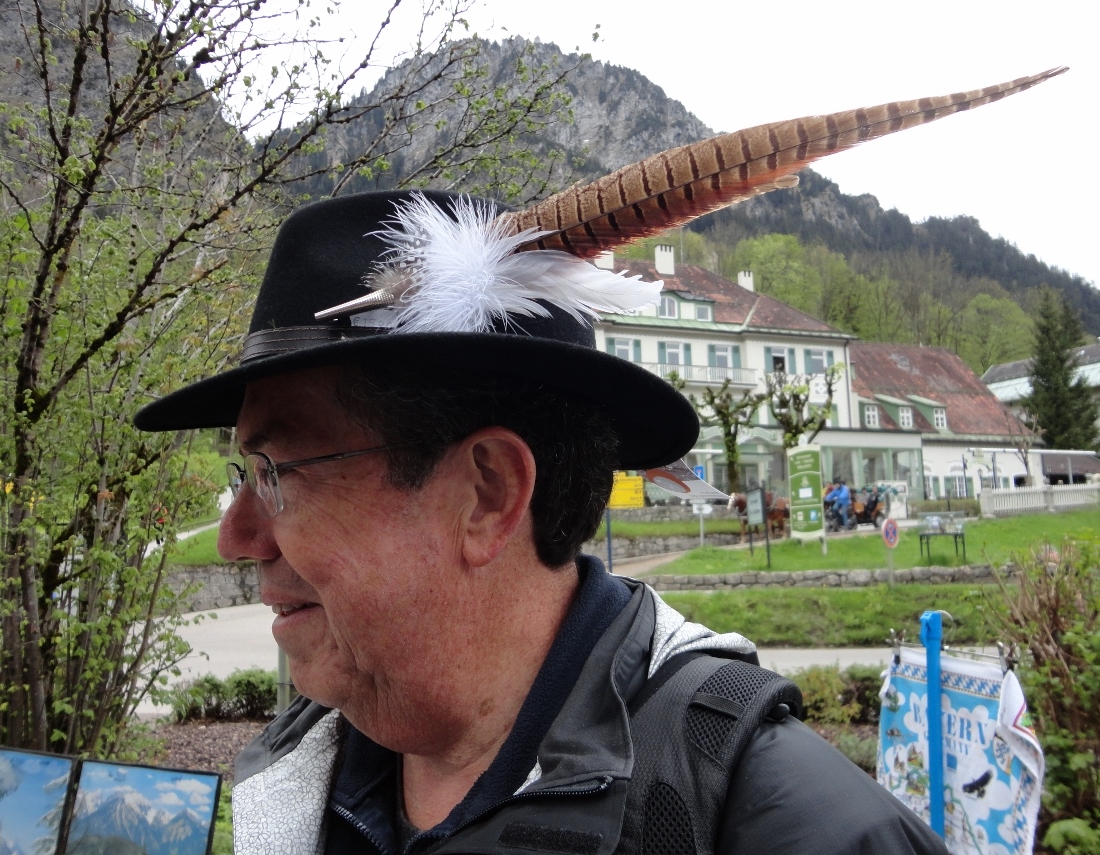
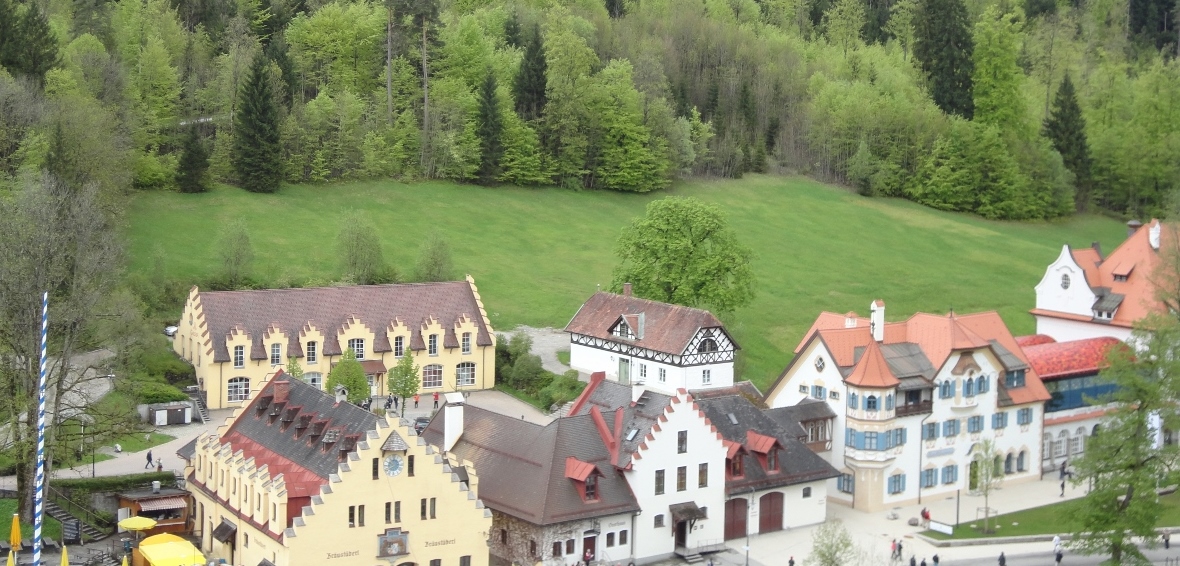
Hohenschwangau (whew)
Hohenschwangau means “highland swan” because swans are the symbol of the royal Bavarian family. The original castle dates from the 1100s, but was destroyed by Napoleon, then rebuilt in the 1830s and used until 1912. It was where Mad King Ludwig grew up.
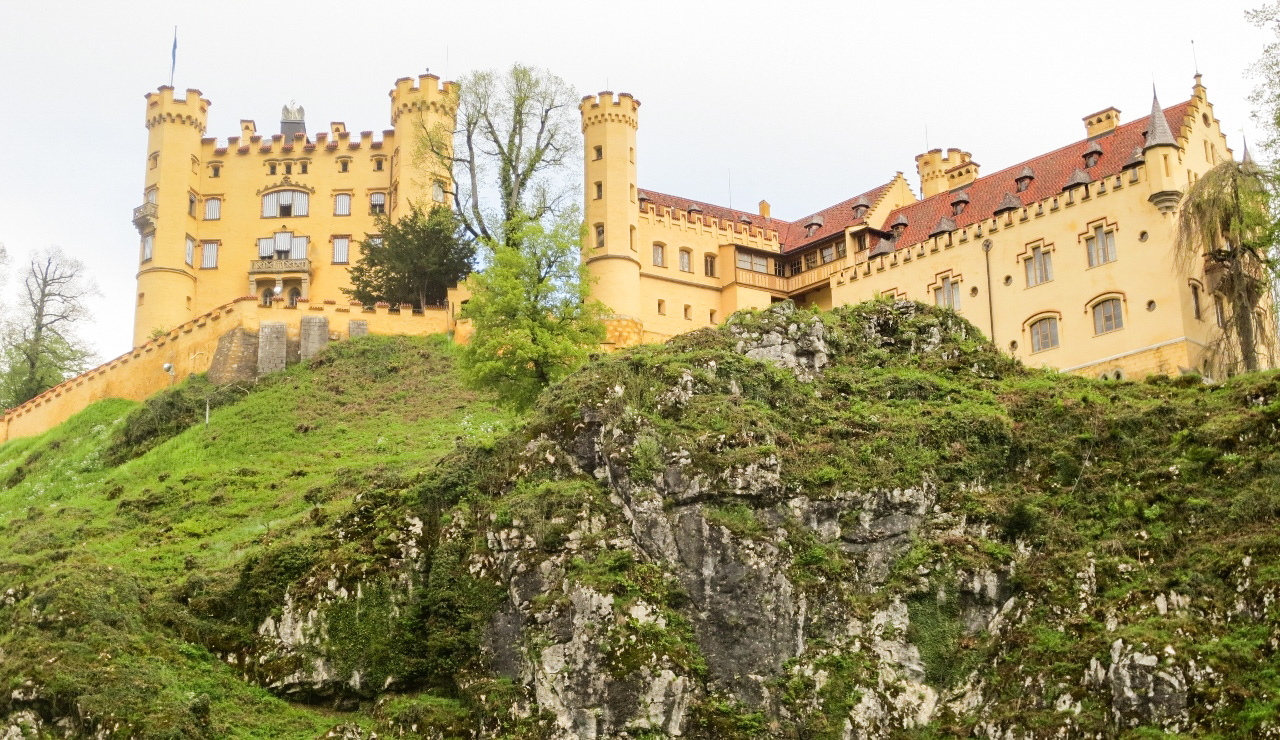
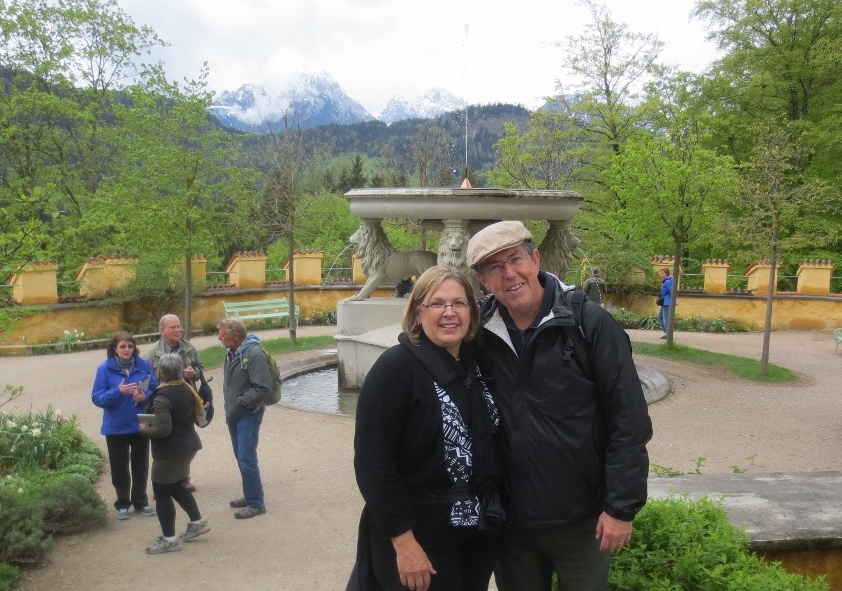
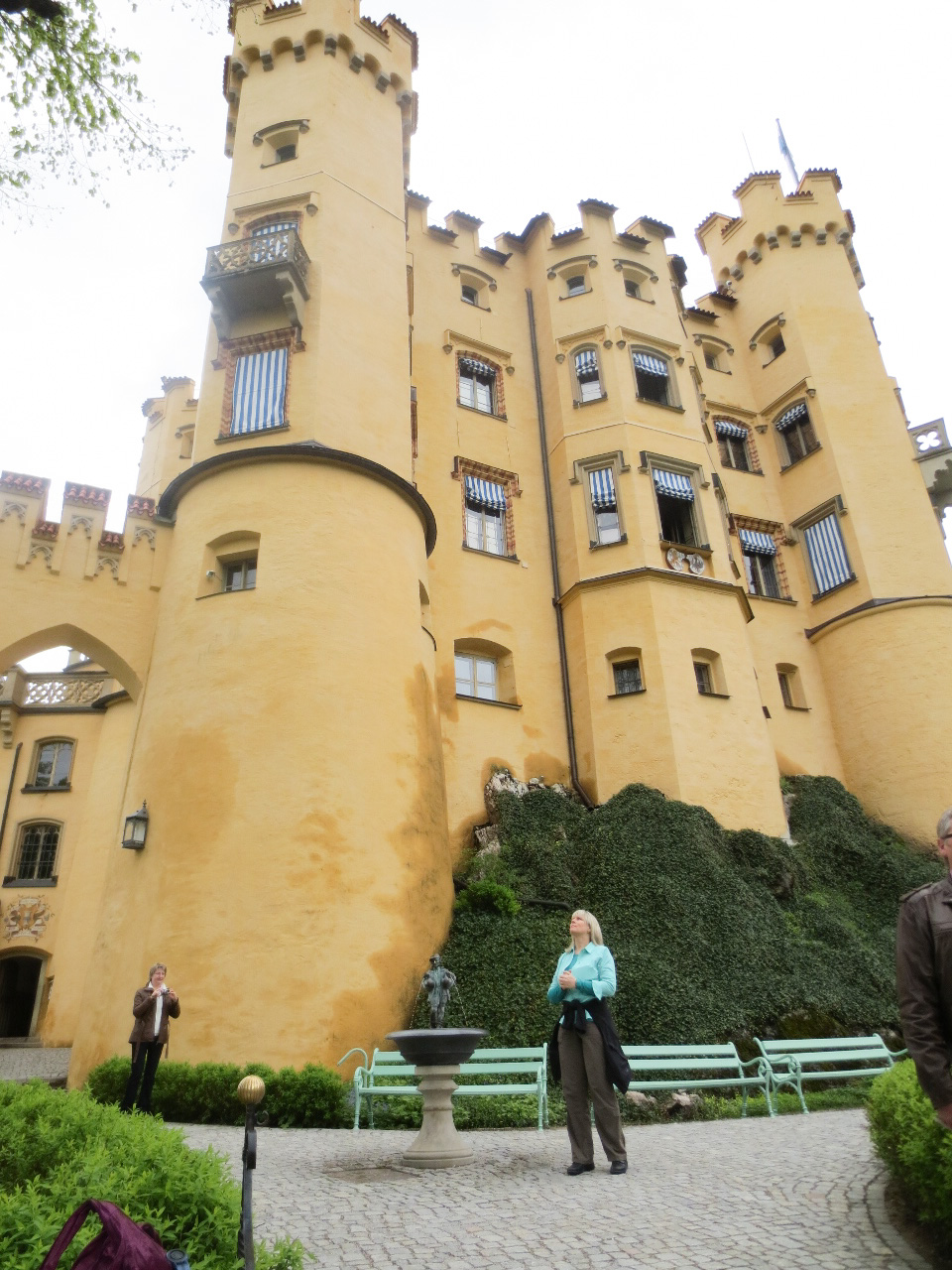
Neuschwanstein- Like A Fairytale
The gorgeous fairytale castle of Neuschwanstein was built by Mad King Ludwig in the late 1800s and was only lived in for less than a year.
People started visiting this castle within weeks after Ludwig’s death and it has been open ever since: except for during the Second World War. The Nazis used it to hide the some of the art work they had stolen. It took a year to get all the art work out, about 49 railcars worth, and returned to the owners if possible.
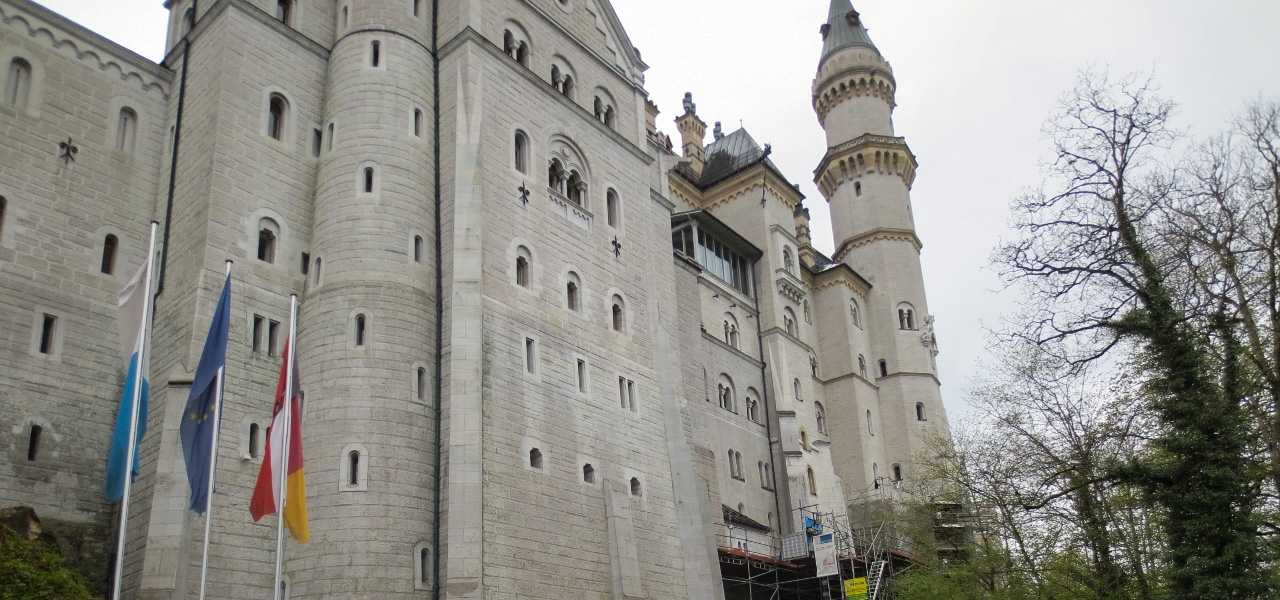
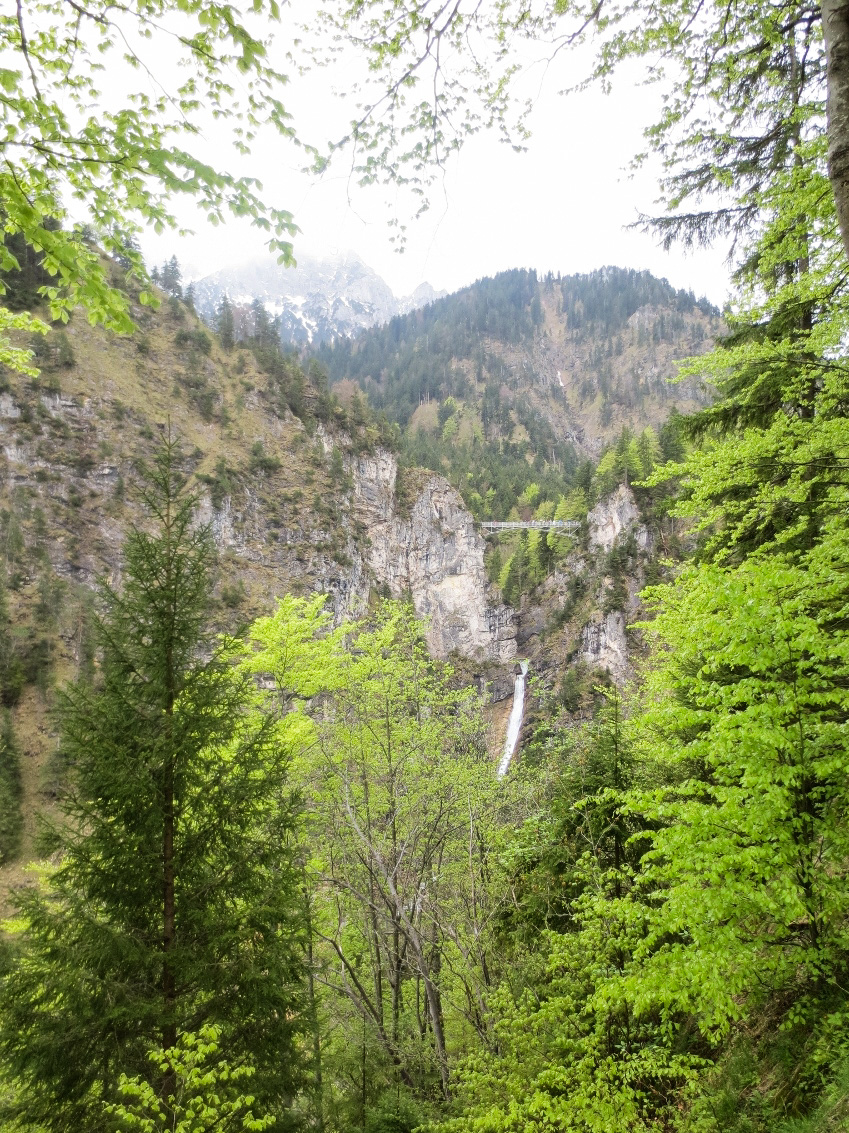
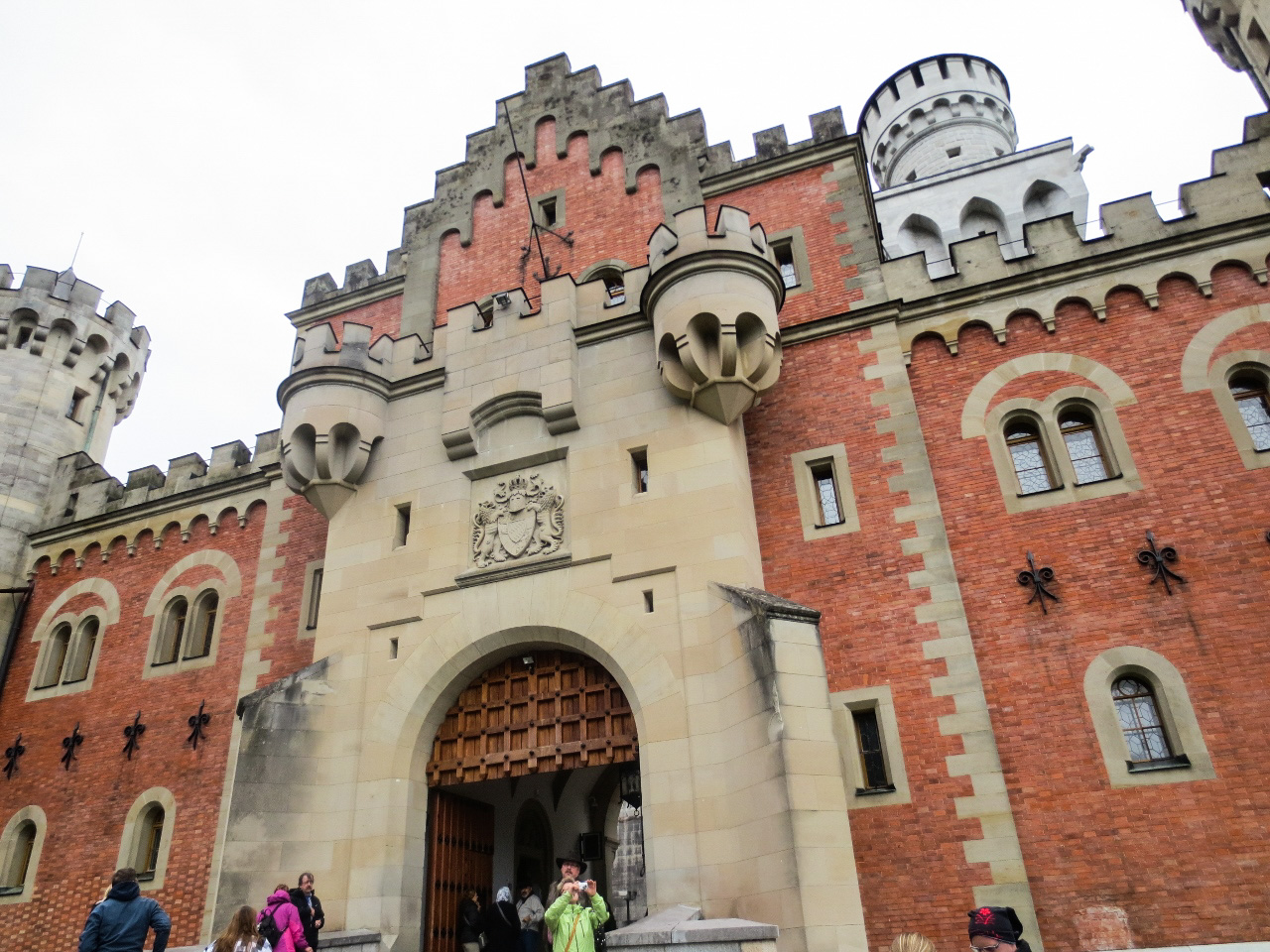
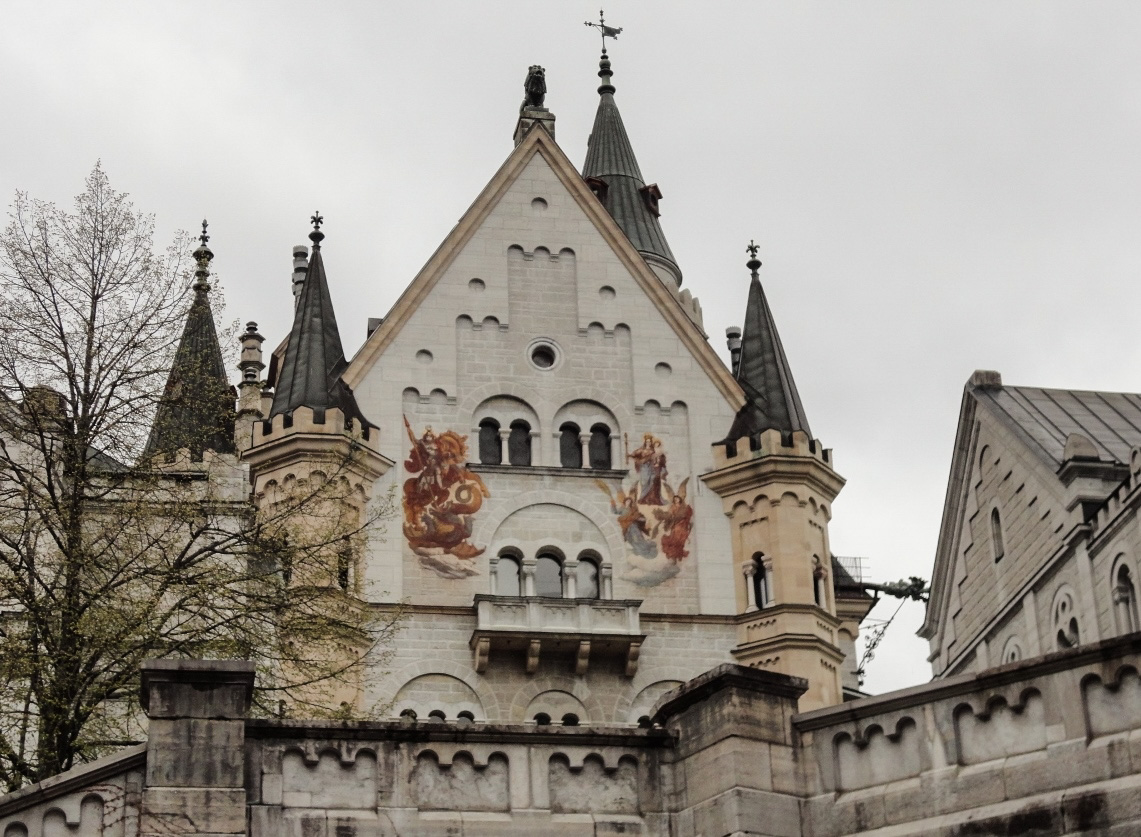
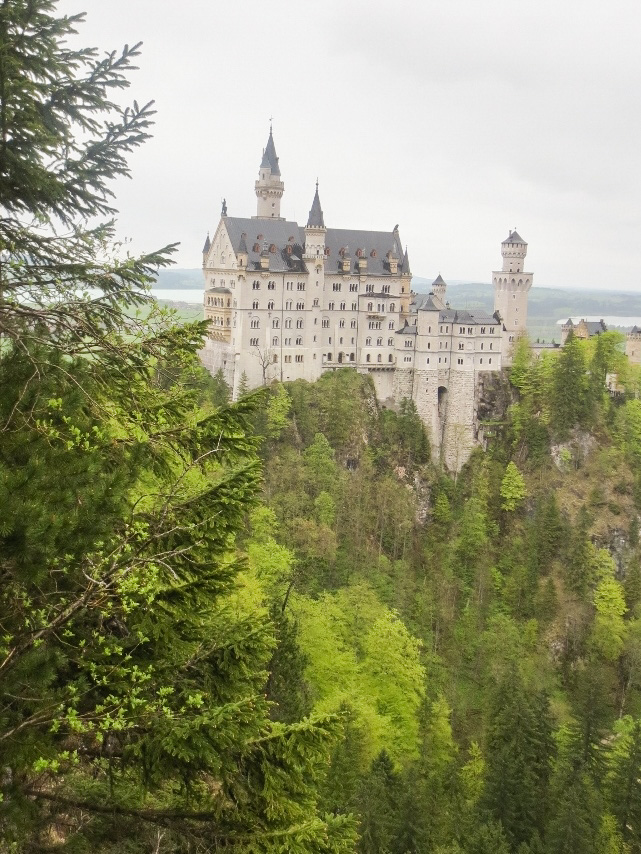



 The Crepes Are Calling…on to France…click here
The Crepes Are Calling…on to France…click here

